Searching for "Blue Sky"
There’s no shortage of surprises in the Garden State.
One of the dopest discoveries there is 440 Sound Studios, a revitalized room where an SSL 4000 G resides within a George Augspurger-designed control center. Meanwhile, 1500 sq. ft. of live space and an upbeat pulse attract everyone from Junior Sanchez and Wiz Khalifa to DMC.
Put the pieces together, and you get an audio haven far greater than the sum of its parts. It all adds up to 440.
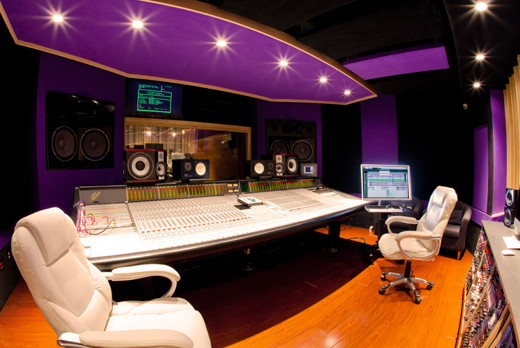
An SSL 4000 G, in a George Augspurger-designed control room, is just the beginning at 440.
Facility Name: 440 Sound Studios
Website: http://www.440SoundStudios.com
Location: Woodlawn Park, NJ
Neighborhood Advantages: Our studio is in the center of a musically rich environment: an industrial park shared with several rehearsal and post production facilities, in close proximity to several notable venues, music stores and great food. It is a 15-minute ride from midtown Manhattan, and easily accessible from most transit lines.
Date of Birth: 440 Sound Studios officially opened in April of this year, but the space has been a recording studio since the late ’90’s. The current owner acquired the space in 2010, and in late 2011 underwent intense renovations improving on both mix rooms and tracking space.
Facility Focus: We are a full-service facility catering towards the needs of our clients. Anything and everything from tracking, to editing and mixing, to full service songwriting and production.
Mission Statement: To provide our clientele with top-notch sound and service, but more importantly a realization of their artistic vision.
Clients/Credits: Junior Sanchez, Wiz Khalifa, DMC, Don Kincaid, Carlos McKinney, Marcos Carnival, David Kowalski, Will Lewis, The Vettes, Caté, Dive, Enemy of Everyone, Alex Plus, Any Time Today, the Glickman Bassoon Ensemble and members of the New York Philharmonic.
Key Personnel: Owner/ Producer Anthony Sabbatino; Manager/ Chief Engineer Steve Kolakowsky; Engineers Kerry Pompeo, Alex Pareja, Davy Lee Marrero and Joey Palmieri.
System Highlights: Room A: SSL 4000 G+ w/ Ultimation; outboard from Rupert Neve, Amek, API, Chandler, Empirical Labs, Burl, Manley, Lexicon & Eventide among many others. Monitoring includes Augspurger Custom Mains, Focal, Barefoot, Dynaudio, Avantone and Yamaha selections. Avid HDX2; Avid HD, Apogee, Antelope and Crane Song convertors, Antelope Rubidium Atomic clocking; Pro Tools 10, Logic and Ableton. Plugin suites from Waves, Avid, Antares, UAD, Sony.
Room B: D&R Triton, Tannoy, Focal and Yamaha monitoring; Dangerous, Avalon, True Systems and Lexicon outboard. Pro Tools 10, Logic, Ableton. Avid HD Native with Digidesign 192 convertors.
Instruments include a Kawai 7ft 6in grand piano, Keyboards by Nord, Yamaha, Korg, Roland, Dave Smith and Kurzweil; Palmetto, Tama, Gretsch and Yamaha drums; Gibson, Fender, Martin and Taylor guitars and basses; and amplifiers from Orange, Marshall, Fender, EVH, Bogner, Ampeg and Mesa Boogie.
Complement of mics from Neumann, Bock, Royer, Blue, Chameleon Labs, AKG, Earthworks, Sennheiser and Shure.

Expansive space awaits in the live room.
Distinguishing Characteristics: George Augspurger-designed control rooms, tuned by Bob Hodas; 1500 square feet of tracking rooms with various sonic characteristics. Enough outboard, mics, monitors, amps and instruments to please almost every palette. O yea, and a sweet lounge.
The building is on fire, you only have time to grab ONE thing to save, what is it? It would be a tossup between our one-button grind-and-brew coffee maker and the limited edition AC/DC pinball machine.
Rave Reviews: The Vibe. Clients are always remarking about the positive energy that flows through our rooms.
Most Memorable Session Ever: What was supposed to be a one-hour overdub session, turned into a four-hour music history lesson provided by the King of Rock, DMC himself.
Session You’d Like to Forget: I wouldn’t want to forget any of them. It seems like the worse they were, the better the learning experiences. (Aside from the day our talkback mic wouldn’t unlatch; I’d like to forget that one.)
Dream Session: To produce the song that someone might someday want to call their dream session.
— Anthony Sabbatino is Owner/Producer of 440 Sound Studios.
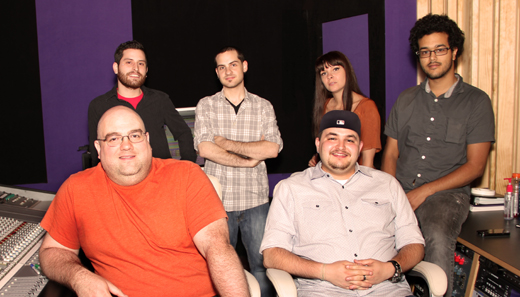
The staff of 440 at the ready.
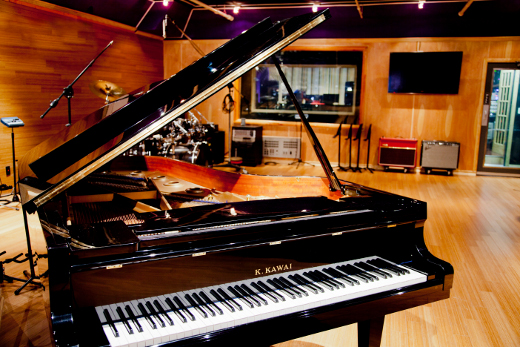
Tickle THESE ivories!
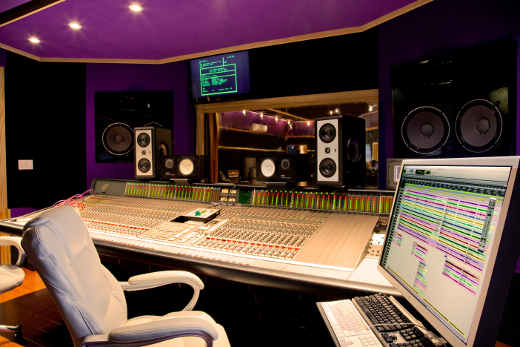
Another view of Control Room A.
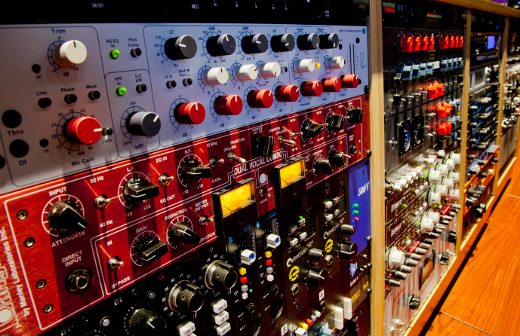
Choice outboard
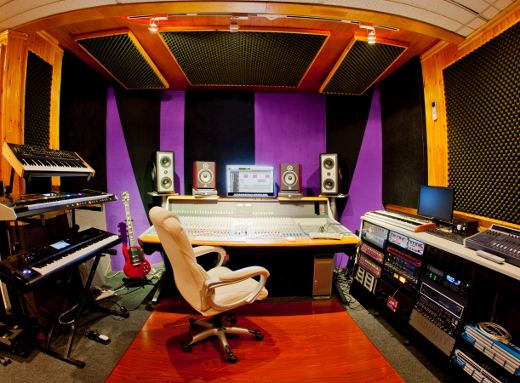
Room B is certified 100% bueno.

It’s ALL about making music.
GREATER NYC AREA: For recording studios, this past summer had its typical ups and downs. But heading into Fall, bands like The Killers, The Vaccines and OneRepublic as well as artists like Tony Bennett, Kurt Vile, Sean Lennon, Rufus Wainright and more had been in NYC-area studios cranking on new and upcoming releases.
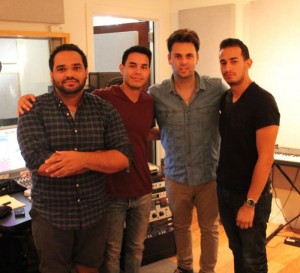
Outasight (third from left) with NYC-based production team The Elev3n
Starting in Murray Hill, Electracraft Music Works @ The Fireplace Penthouse hosted sessions with Mark Foster, of Foster The People, recording vocals for “Polartropic” – a soundtrack song for Tim Burton’s new film, Frankenweenie. Warren Babson engineered the session.
Also at Electracraft…Jack Antonoff and Andrew Dost of the band FUN were in to work on some new material, with Matt Morales engineering…Melanie Fiona came through to record some live acoustic tracks for Cricket Mobile, with Sam Katz engineering…hip-hop artist Outasight recorded with producers The Elev3n and Morales engineering, and Liz Gillies (of Nickelodeon’s Victorious) recorded some new music with Babson engineering.
Downtown, The Killers recorded and mixed their new album Battle Born over the summer at Germano Studios – with Alan Moulder mixing (various producers). OneRepublic has also been recording their latest at Germano – tracking guitars, keyboards and mandolin with singer/producer Ryan Tedder producing and engineering
And in other Germano sessions… The Goo Goo Dolls were in writing and recording new materials with John Shanks producing and Dan Chase engineering… Chris Shaw mixed an Ozzy Osbourne live DVD release, with Bruce Dickinson producing…Robin Thicke recorded vocals with Paul Falcone engineering, as did Mary J. Blige (also with Falcone)… Singer Jessica Sanchez (American Idol) recorded vocals and programming with Harvey Mason, Jr. producing and Andrew Hey engineering…and tracking sessions for a new John Legend album (recording guitars, vocals, piano, harp, keyboards in Studio 1 & Studio 2) with Dave Tozer producing and Jason Agel engineering.
The Killers went from recording and mixing at Germano, to The Lodge Mastering where Emily Lazar and Joe LaPorta mastered Battle Born. The Lodge’s mastering engineers Lazar, LaPorta and mastering engineer Heba Kadry have also recently mastered records by Dum Dum Girls, Imagine Dragons, Negramaro, Jeff Wayne’s The War Of The Worlds, James Iha, The Sea and Cake, …And You Will Know Us By The Trail of Dead and Sarah Blasko.
Meanwhile, rapper Wale has been recording an upcoming project in Studios A and C at Manhattan Sound Recording Studios (MSR) in Midtown – with engineer Kevin Spencer and MSR assistant Gloria Kaba.
Also at MSR…Jazz artist/bassist Christian McBride has been mixing two upcoming albums – with Joe Ferla on the Euphonix System 5 in MSR’s Studio B, assisted by Brett Mayer…the cast album for Broadway’s Bring It On was tracked in Studio A by engineer Derik Lee and composer Alex Lacamoire for Sh-K-Boom! Records, and then mixed by engineer Tim Latham…and Derik Lee also recorded some cues for the film Greetings from Tim Buckley.
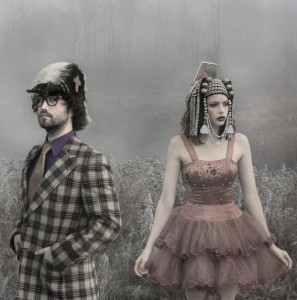
The Ghost Of A Sabre Tooth Tiger: Sean Lennon and Charlotte Kemp Muhl
Sean Lennon brought his Ghost of the Sabre Tooth Tiger project to Sear Sound last month. Tom Schick mixed the album – for Lennon’s label, Chimera Records – on Sear’s Neve 8038 to ½” 2-track on the ATR-102 machine.
Also at Sear Sound…Rufus Wainwright tracked new material on Sear’s Steinway “C” grand piano for Verve Records, with Sear’s Chris Allen engineering…jazz bassist Dave Holland and his ensemble tracked a new album with James Farber engineering…Ron Saint Germain produced and engineered a new recording by classical pianist Tania Stavreva on the Steinway “D” concert grand…and vocalist Keiko Lee tracked via the custom Avalon/Sear console in Studio C with Jay Newland engineering and producing for Sony/Japan.
Tony Bennett was back at Avatar Studios – this time to work on his Latin duets project, in Studio A. Bennett recorded vocals with Juan Luis Guerra, Romeo Santos and Ana Carolina. His son Dae Bennett engineered and produced the sessions, assisted by Aki Nishimura and Charlie Kramsky.
In other recent Avatar sessions…The Young Presidents tracked with producer /engineer Rob Fraboni, assisted by Bob Mallory and Tyler Hartman…Jennifer Hudson recorded for NBC’s Smash with producers Marc Shaiman and Harvey Mason, Jr., and engineer Andrew Hey…Bobby McFerrin recorded with producers Linda and Gil Goldstein assisted by Charlie Kramsky…and Esperanza Spalding was videotaped for ASPiRE TV with producer Nicole Bentley assisted by Aki Nishimura.
And all the way downtown at Engine Room Audio, 50 Cent was in the studio working with mastering engineer Mark B. Christensen to master his latest single, “New Day.” The track – released on iTunes on July 31 – features Dr. Dre and Alicia Keys, and was mixed by Eminem.
Christensen also recently mastered NYC alt-rock band Weep‘s new album, Alate, and the new Trey Songz album, Chapter V, which came out in August and hit #1 on the Billboard 200 chart in its first week.
Meanwhile In Brooklyn…
Yuka Honda (Cibo Matto, Yoko Ono) booked time at Joe McGinty’s Greenpoint synth studio, Carousel Recording, to record keyboard overdubs for Martha Wainwright’s new album, Come Home To Mama, which she is producing. Keyboardist Jared Samuel recorded on Carousel’s Moog Modular, Rhodes, Yamaha Organ and Hammond during these sessions.
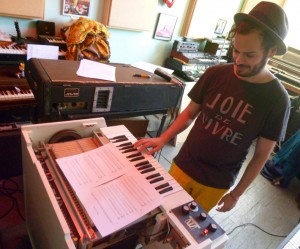
Composer/producer Bryan Senti on the Mellotron at Carousel
Chiara Angilicola’s Bird Call project also came to Carousel to record the Mellotron and other assorted keys for an upcoming full-length album – produced by Bryan Senti (Rufus Wainwright).
DJ/producer Kid Koala collaborated with composer/producer/engineer Joel Hamburger on music for a new animated series and puppet show – both developed by Jhonen Vasquez – at Hamburger’s Park Slope studio, GödelString. For the animated series, Kid Koala (aka Eric San) and Hamburger worked off of a theme composed by Vasquez, and for the puppet show score, improvised recording sessions with James McNew and Amy Posner of Dump on guitar and keyboard.
“For me, the thrill was in working as fast as possible to set up and capture the moment and then being able to enjoy the magic of having these sketches being transformed into fairly complete pieces and soundscapes,” said Hamburger. “I also got to break out some of the great vintage keyboards we have at the studio.”
At the new Degraw Studios in Gowanus, rock band The Skins recorded and mixed an upcoming release with producer/engineer Ben Rice. Rice also mixed a new EP for Elliot & The Ghost – produced by Jared Dodd, and recorded/mixed new material for indie-rock band Chainwave.
Also at Degraw…banjo master Tony Trischka recorded with a bluegrass ensemble including guitarist Michael Daves, banjoist Noam Pikelny and mandolinist Mike Compton – with Matt Werden engineering.
Out of his Glassfactory studio in DUMBO, mixer/engineer Alex Aldi co-produced and mixed a Passion Pit song for the upcoming Twilight movie, Breaking Dawn – Part 2. Aldi also worked on the radio mix of The Hundred In The Hands’ “Come With Me” off their new album on Warp Records.
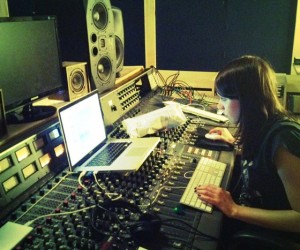
RCA hip-hop artist K.Flay at The Bunker
And back in Williamsburg, hip-hop artist K.Flay spent two weeks at The Bunker, writing and recording tracks for her upcoming RCA record – with Justyn Pilbrow producing, and Chris Mullings engineering. Singer/songwriter and pianist Johanna Cranitch also brought her band project Johanna and the Dusty Floor to The Bunker to track and mix a full-length album – with Chris Berry on drums, Rob Gentry and synths/programming, and Aaron Nevezie producing and engineering.
And in other Bunker sessions… Nevezie engineered a “monster tracking session” for a 30-minute piece called “Drummer’s Corpse”, led by drummer/bandleader Mike Pride and featuring seven drummers and multiple other musicians and vocalists…and 11-piece Afro-beat band Zongo Junction tracked their new full-length album live to the Bunker’s 24-track Studer machine over two days with Nevezie engineering.
Meanwhile, engineer/producer Matt Boynton has been busy at his Williamsburg studio, Vacation Island. Over the summer, Boynton mixed a track for Rainbow Arabia, a project that continues there this month, and finished the new Vietnam‘ record – coming out early next year on Mexican Summer. Free Blood and Wild Yaks also mixed their latest with Boynton. Fred Nicolaus of Department of Eagles mixed his solo release with Boynton as well.
On the recording front, Boynton recently tracked and mixed two new songs for Hospitality and recorded (with Rob Laasko) a new song for Kurt Vile. Most recently, Boynton tracked a new song for UK artist Amy Studt, and The Vaccines came through while in Williamsburg between shows to track and mix a new song.
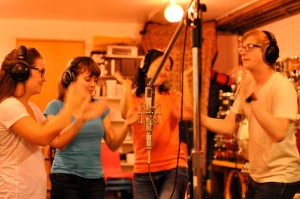
Sky Pony at Grand Street (l-r): Lauren Worsham, Megan Stern, Jesse Suzuki and Kyle Jarrow recording group vocals and claps around an AKG C24.
Also in Williamsburg, Grand Street Recording (<– new website) recently hosted the 8-piece indie-pop band, Sky Pony – led by Kyle Jarrow – to record and mix their new EP with engineer/producer Ken Rich.
Also at Grand Street, acoustic punk band The Narrowbacks recorded a full-length record with Tomek Miernowski…Noe Venable has been constructing an acoustic album “filled with unexpected sounds and compelling arrangements” – recorded by Ken Rich, and featuring Mathias Kunzli and Todd Sickafoose…
I’m In You finished mixing and mastering their third full-length release with Rich…and TV On The Radio‘s Kyp Malone stopped by to record vocals with Emily Long & Velta on their latest record, with Miernowski engineering and mixing.
Grand Street also recently added a pair of Mohog MoFET76 limiting amplifiers and an AKG D30 to its ever-growing collection of vintage microphones. In drum-land, the studio added a 1959 Ludwig WFL Badge 6 ½” x 14″ Snare that still has the original Ludwig calf-skin resonant head – serviced by John Fell over at Main Drag Music.
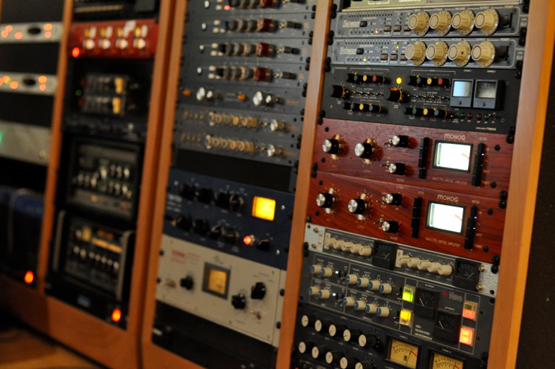
The new Mohog MoFET76s (in red) at Grand Street
And we know there’s so much more going on out there! If you’d like to be featured in “Session Buzz,” please submit your studio news to submissions@sonicscoop.com.
GREENPOINT, BROOKLYN: Winters in Anchorage, Alaska are epic. And, as it turns out, ideal incubators of NYC studio innovators.
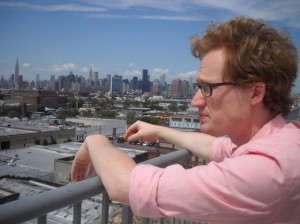
Erik Braund takes a new viewpoint into Greenpoint. (Photo: David Weiss)
Erik Braund, chief proprietor of the intriguing new Greenpoint facility known as Braund Sound, explains the musical connection between the sub-Arctic outpost where he grew up, and the 24-hour metropolis that he now occupies.
“Alaskan winters are the coldest, darkest, longest seasons you can imagine,” Braund explains. “Music was a wonderful escape from that. It’s an easy place to hole up and woodshed on guitar and drums – because it’s cold outside! It’s dark outside! When the thermometer reads minus-ten degrees, you don’t really want to go out.”
Eventually, however, Braund did step outside – way out. (4,367 miles out, to be exact.) The result is a paradoxically distinctive home base in Gotham, where a one-room studio in-the-round houses an ambitious multimedia venture.
One Room, Many Uses
Although he’s just 27, Braund appears to have jam-packed his time on Earth with action aplenty. His life was massively altered by the arrival of Nirvana’s Nevermind, and he went from playing hockey to being a proficient guitarist and drummer. Bit by the recording bug early on, he set up his first studio in Anchorage (“a dump with a shitload of gear”), which was funded by his fiscal success managing SEO campaigns for Web clients.
A fourth-generation Alaskan with extensive family ties to Norway, the enterprising Braund began producing and engineering heavily in the US and Europe (credits include A Place to Bury Strangers, Strange Shapes, Jared Woods, The Whipsaws, Delmag, Bowerbirds) as he dropped in, out, and back in to some of America’s finest educational institutions. Not long after graduating from NYU’s Clive Davis Dept. of Recorded Music (he also spent a year at NYU’s Interactive Telecommunications Program), Braund felt ready to carve his own niche out of NYC’s crowded audio scene.
Not surprisingly, the spot he was selected is as far North as you can go – in Brooklyn. He found that relatively affordable space was available in the bustling Greenpoint Lofts building at 231 Norman Avenue, an artistic beehive that hosts an interconnected community of filmmakers, designers, and other studios.
After a careful assessment of the 1,600 sq. ft. space, Braund came to two – seemingly diametrically opposed – conclusions: 1) that the uncommon one-room studio-in-the-round design would be necessary for Braund Sound’s first phase, and yet 2) it would be an ideal HQ for multiple content-related business models, ranging from recording to audio post, video content production to an indie record label.
“If there’s one thing that’s at a premium in NYC, it’s space,” Braund acknowledges. “It’s not huge here, but I have space. I can record full rock bands here. I can make great live videos of them performing, or I can put up a green screen and create something else entirely. This is my headquarters. I like working with my friends, and I have a good network of people I respect that I’m excited to work with.”
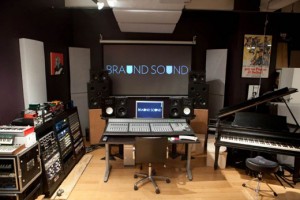
A studio-in-the-round design takes some planning. (click to enlarge)
Making the Studio In-the-Round
As he’s done with his life, Braund has packed a great deal into the 1,600 sq. ft. studio space of Braund Sound – while still making it all an enjoyable experience. Two racks of Distressor-dominated dynamics, API/Neve-flavored mic pres and effects are connected via 32 channels of Aurora Lynx A/D/A into a “vintage” Digidesign Pro Control 24-fader worksurface running Pro Tools HD2. Genelec, Yamaha and Mackie monitoring are available, with a Dangerous Monitor system.
Instruments on hand for recording are plentiful, including an ample supply of electric/acoustic guitars and basses; two beautiful DW plus one Slingerland drumsets with Craviatto snare (six more snares available) and 1922 Estey baby grand piano. Mics on hand to capture it all include hand-picked models from Neumann, Josephson, Schoeps, Blue, and Royer. A 10-foot video screen with HD projector dominates the wall facing the mix position.
A bonus at Braund Sound is the presence of a peppy Pomeranian named Goonie. Adding to the Alaskan wildlife experience is the cat Buffy, who resides full time in the adjacent sunlit lounge, complete with foosball and the indispensable Goldeneye Pinball Machine.
Despite the significant gear and instrument manifest, the Braund Sound space has plenty of room to breathe, create, and – most importantly – collaborate. With no control room, Braund revels in the advantages of recording in the same room as his clients.
“The biggest benefit of a studio-in-the-round is communication,” he states. “You have constant eye contact, and you can take your headphones off and talk to each other, instead of the fishbowl effect of pressing the button and saying ‘Go’ from another room.
“There’s no chance you can be texting during tracking, or otherwise ignoring your client here,” he continues. “I’ve been on the other end of that. This scenario requires everyone to be present. If you’re in here, you’re in here.”
Braund acknowledges that a studio-in-the-round setup can have its perils – the slightest audible shift in his chair could blow a breathy vocal take happening a few feet away. But ultimately he sees it as a perfect match for his recording style, which emphasizes creative connectedness between producer/engineer and artist. “I was expecting more glitches, but I’ve gotten totally comfortable working this way,” says Braund. “I find that the focus is heightened when everyone is in the same room.”
By maintaining his roots in the highly active Alaskan and Norwegian rock scenes, Braund Sound has quickly established itself as a welcoming space for far-flung clients trekking to NYC and his Brooklyn studio. Even though he’s just opened in May, so far Braund has already tracked sessions for 25 clients in the space. Word is spreading to the advertising community as well, with agency clients finding that the spacious open room helps get quick results from talent in time-sensitive VO sessions.
And while Braund Sound has acoustics that make it a smart match for a wide range of styles, its founder is unabashed in his allegiance to the rock & roll that got him started. “The musical niche here is rock band tracking, if I had to sum it up,” Braund says. “Because I’ve played drums and guitar, I can speak drums to the drummer and guitar to the guitarist. And as a producer I bring my influences and taste — which is not the best taste, and not the worst taste. It’s just mine.”
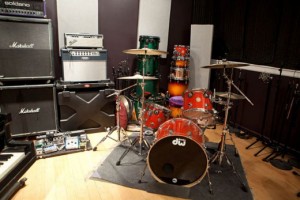
Drums can ring out here. (click to enlarge)
A Smarter Studio Business
Braund may be young, but he knows that simply setting up a shingle as a recording/mixing studio in 2012 is a risky bet.
That’s why Braund Sound is every inch a multimedia venture. His Web channel “Live at Braund Sound” demonstrates the facility’s capabilities for shooting/editing video, as well as mixing to picture. The Braund Sound label is working steadily alongside, providing him with an angle to work closely with his friends from Alaska, Norway, NYC, and anywhere else on the planet that harbors talent.
“This is my Erik Braund hub,” he says. “I’m not just trying to be in the studio business. My goal is not for the room to be booked every day of the week. Instead, it’s about creating an environment to work with good people in different ways, whether its video, recording, editing or producing. This place is creating the space for that.”
Still, there’s no denying that the space Erik Braund created, at any given time, may very well emerge as a craved flavor in NYC’s wildly diverse recording scene – not just due to the way this distinctive space sounds, but to the way it feels.
“The first time everyone comes in here, they say, ‘Where’s the booth?’” notes the enterprising audio maven. “They start out apprehensive, but once everyone is outfitted with their own headphones and cue system, people see they all have a nook to fit in.
“By the end of the session – every single session – people all say the same thing: ‘I was really comfortable.’ That’s the best feedback I could get. That’s what people come back for.”
— David Weiss
Special thanks to Julian Silva of On Air Mastering for helping to make this story happen!
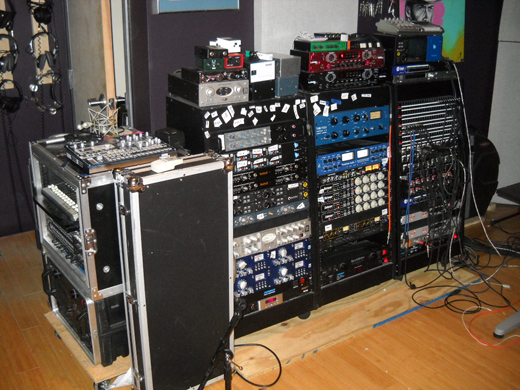
To the left of the console, the producer’s rack is bookended by the portable live rig. The studio entrance is in the background. (Photo: David Weiss)
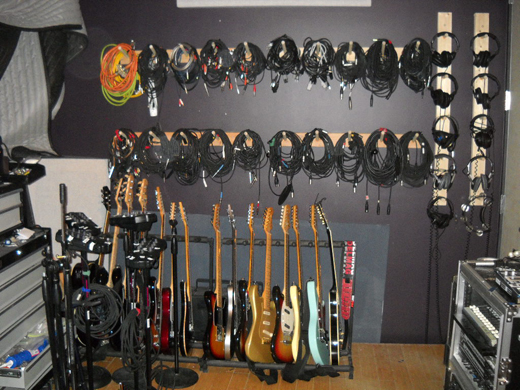
Guitars are organized in the adjacent corner. (Photo: David Weiss)
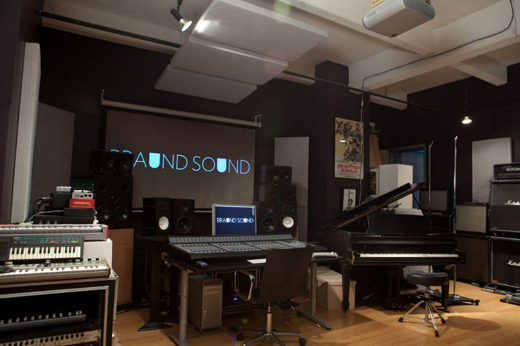
The room as seen from the guitar corner.
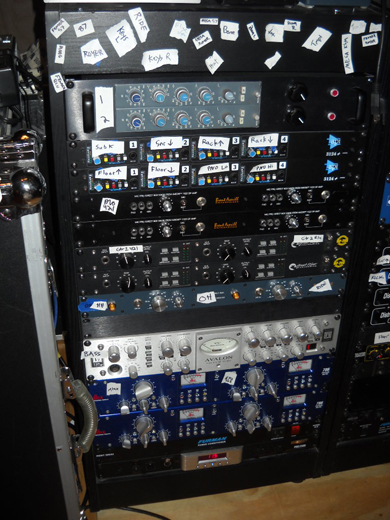
Neve and API mic pres are preferred, but other flavors are available. (Photo: David Weiss)
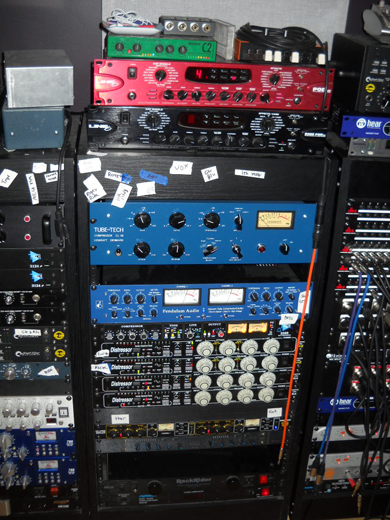
Tube-Tech, Empirical Labs, and a few other choice goodies in Rack 2 (Photo: David Weiss)
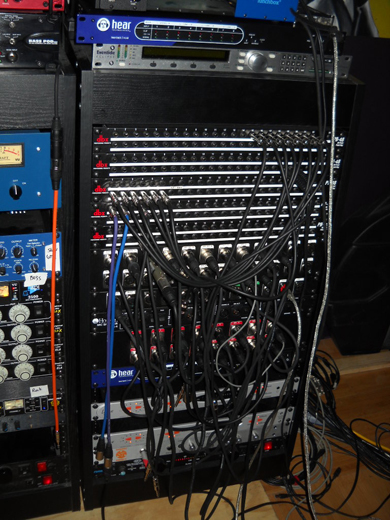
Patch bay, Aurora Lynx converters, and Dangerous Monitor ST. (Photo: David Weiss)
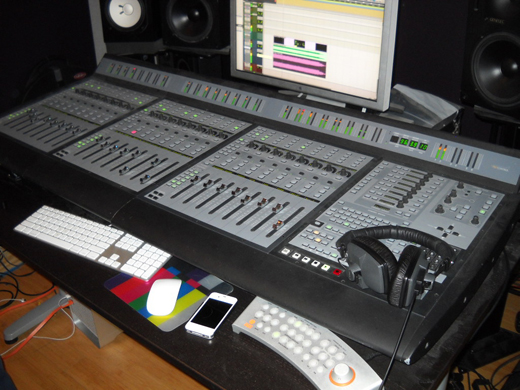
The “vintage” Pro Control w/Dangerous Monitor ST control. (Photo: David Weiss)
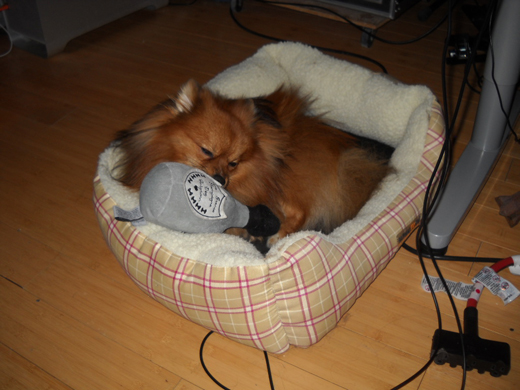
Goonie is on guard under the console. (Photo: David Weiss)
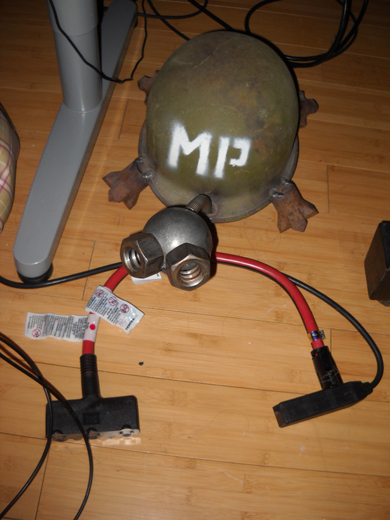
And of course every studio has one of these. (Photo: David Weiss)
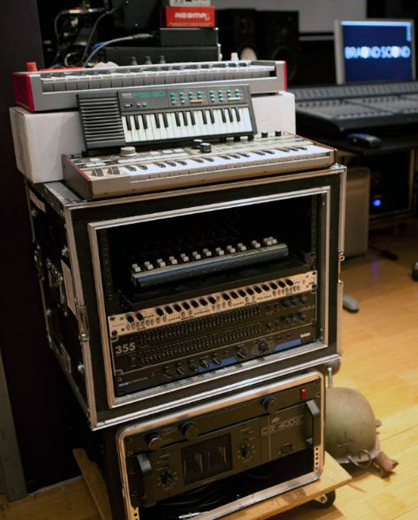
The portable live rack is at the ready.
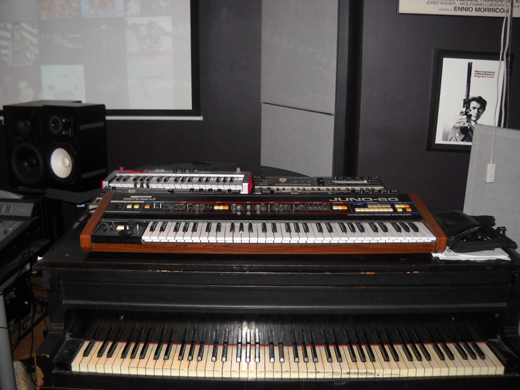
Keys on keys. (Photo: David Weiss)
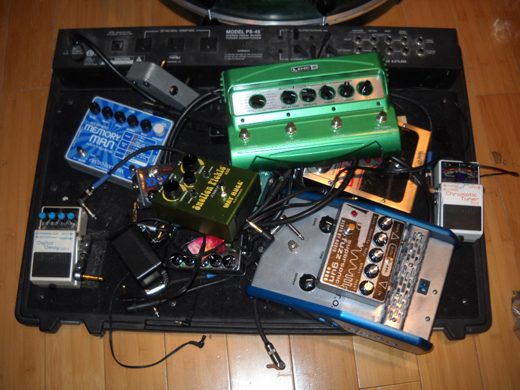
Pedal messsss. (David Weiss)
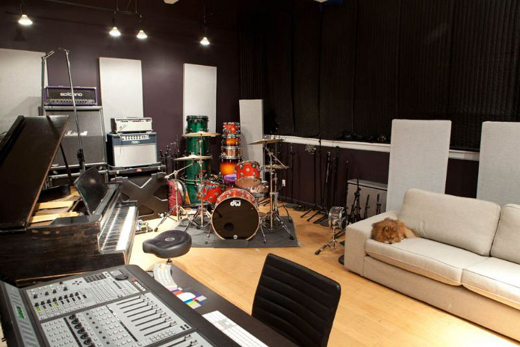
Another view of the room, from the mix position to the drums.

Amplifiers are on hand.
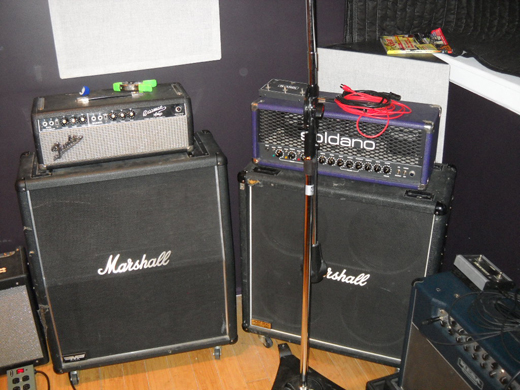
Additional amp action. (Photo: David Weiss)
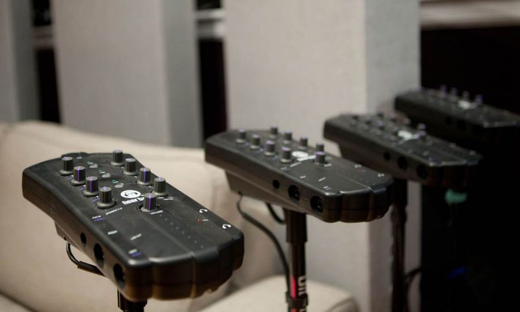
Individual Hear Technologies cue systems are essential in these quarters.
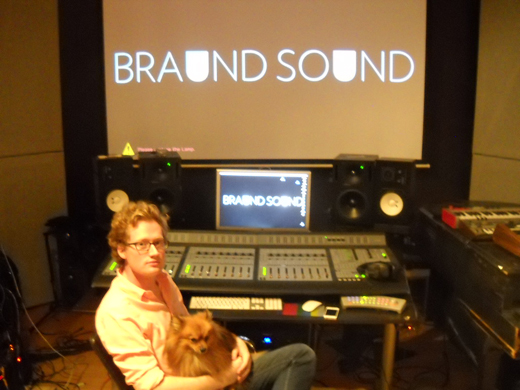
Multitaskers in the house. (Photo: David Weiss)
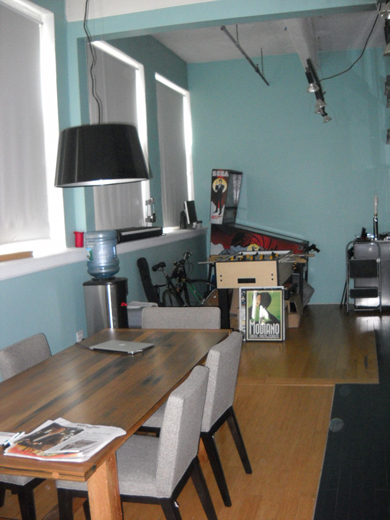
The adjacent lounge provides headspace. (Photo: David Weiss)
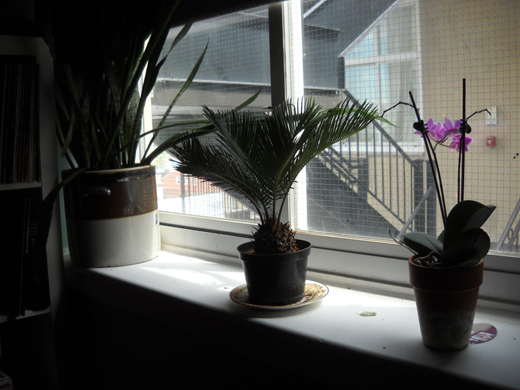
All the outdoor freshness of an Alaskan winter! (Photo: David Weiss)
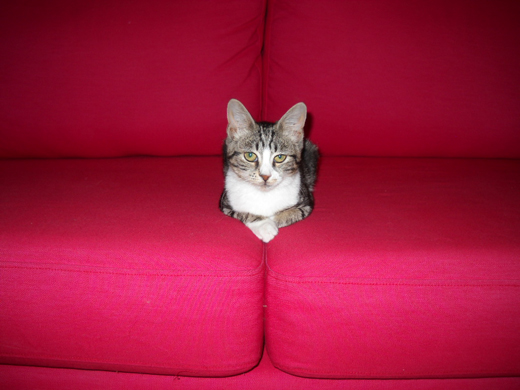
Buffy: Braund Sound Studio’s Chairman of the Board (Photo: David Weiss)
MIDTOWN, MANHATTAN: There is something afoot on West 37thStreet. Taking a stroll down this intensely bustling block, those in the know may see a sudden influx of familiar faces – a producer, an engineer, a platinum-selling artist – all caught in a tractor beam leading to the same address.
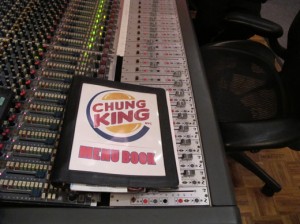
NYC wouldn’t be quite the same without it. (All photos: Janice Brown)
Follow one of these sonically-centered citizens into the elevator at 36 West 37th and ascend upward — when you step out, you should recognize this mecca. You’re in one of New York City’s most essential recording studios, with a classic 1970’s live room that’s been the birthplace of hundreds of huge hits over the years, if not thousands.
But what domain have you entered? It’s hard to know, because it’s had multiple owners, multiple name changes, and wars have been waged for the right to run it. It’s been called Skyline Studios…Alien Flyers…Chung King…Skyline Recording Studios…
Suddenly, a force you can feel enters the room. You are face-to-face with New York City’s most tenacious studio owner – a musical maven as every bit as committed as he is controversial. And then it hits you: Chung King Studios has returned.
A Room of His Own
The 6000 square feet and two studios of the third facility to bear the Chung King name may seem sizable to some. But for John King, the storied midtown space he now occupies is a perfectly cozy house of sound. Especially in comparison to the two-floor, 20,000 sq. ft. behemoth that he had managed at 170 Varick Street, starting in the mid-1990’s until a fast-furious flameout in January, 2010.
“The reason I came back is: I love studios, I love equipment, and I love my friends who I’m working with,” says King, speaking rapid-fire yet somehow more relaxed. “Towards the end of my run at 170 Varick, I had a $1.2 million nut that I had to cover, and I realized everything was changing: It required too many people, we had to take two inventories a day – there was too much required to keep everything going.
“So I had a lovely vacation. I had a lovely time. And then the call of the wild sounded – I had to come back. Only this time, I wanted something more manageable.”

John King has a renewed focus.
His chance came in April this year, just after Jonathan Mover, who had been owner/operator of Skyline Recording Studios for several years, vacated the space. For King, the opportunity to move in was irresistible: at one point in the 1990’s he had been a partner in the rooms, knew them very well, and held them in extremely high regard.
The respect comes with good reason. While being helmed by Paul Wickliffe, President and Chief Engineer of Skyline Studios from 1979-1994, the list of platinum-selling artists, producers, and engineers who frequented the facility mushroomed into an awesome A-list. A tiny sampling includes Babyface, David Bowie, James Brown, Mariah Carey, The Cult, Miles Davis, Duran Duran, Mick Jagger, Meatloaf, REM, Talking Heads, and Frank Zappa, along with Jellybean Benitez, Frank Filipetti, Scott Litt, Hugh Padgham, Phil Ramone, Nile Rodgers, Ron St. Germain, Don Was, and Hal Wilner. In later years, it continued to be a hotbed of rock and jazz recording. Get the point? Plenty of platinum has been produced here.
“The original designer of this room really knew how to build the perfect studio,” King says of Chung King’s 1500 sq. ft. centerpiece, which he has dubbed “The Empire Suite”. “After making my classic CK mods, it’s ideal in here, because of the diversity of reflections and absorptions that are happening. This live room is so versatile, and it’s wonderful if you know how to use it. We’ve got a custom Yamaha C7, and I’ve never heard a grand piano sound so fabulous as it does in here.”
Inside the Empire Suite’s spacious control room, King has installed the Musgrave-modified Neve VR72 that formerly occupied his famed Red Room on Varick. Augsperger mains, Pro Tools 10 HDX with all the new trimmings such as UAD and Softube plugins, a comprehensive collection of outboard gear, and a vast collection of classic tube mics from the past and present complement. A palette of available tape machines is also on hand, for those purists who crave the sound.
“That console has made more hits than any other board I’ve ever had,” says King of the Neve VR72. “And analog is still analog – steak is still steak. I was doing a mix with this board the other day and I kept pushing the faders up. The meters were pinned to the right, and I got a Pultec-like sparkle. I couldn’t overload the console! It sounds fabulous. That’s where a Neve is the bomb.
“And the Empire control room is just the most accurate room I’ve ever worked in: What you hear is the exact presentation of what the music sounds like.”

A live room that’s recorded too many hits to count.
One recent return customer to the room is GRAMMY-winning producer/mixer Patrick Dillett (David Byrne, Mary J. Blige, They Might Be Giants, Glen Hansard, Arto Lindsay). “I think it’s the biggest-sounding small room in the world,” Dillett says. “It’s a really nice, warm-sounding drum room, but also very good for vocals because it’s not overpowering. The ceilings are high, and the walls are treated with a nice-sounding cedar. So what you get is a reflective – but not overly-reflective – space.
“John King is a real studio guy,” Dillett adds. “He understands what makes the recording process enjoyable, and how to make sure that it stays enjoyable. I think he’ll be a good steward for what should be one of the better studios in NYC.”
Trademark Design
Meanwhile, Chung King’s “B” room is The Genius Suite, a 120 square-foot production suite optimized for writing and mixing. Here, a Digidesign C24 control surface connects with Pro Tools 10 HDX and a Shadow Hills Equinox, a crafty two-rackspace unit which features two GAMA mic preamps, 30 channels of analog summing, and a mastering-grade monitor controller.
“I love a room this size – I like to be in a place like this, shut the door, and just work,” says King, who was instrumental in shaping the sounds of rap and hip hop royalty including Run DMC, LL Cool J, the Beastie Boys, and many more. “I especially love the Shadow Hills Equinox passive mixer that we have in here. It’s really cool – you have two mic pres with different ‘metal’ you can run them through, either your classic Neve, and then your API. And then you have your pads, your phantom power: It’s a classic console in a box with a great monitor section. For the personal studio, that’s generally all you need.”
In both the Empire and Genius Suite, as well in the hallways, the distinctive look and feel that defined Chung King’s Varick Street complex is revealing itself in the new space. Whether its the wood wings surrounding a control surface, the angles of a producer’s desk, or the hues of a wall or hallway, all you see directly reflects King’s trademark visual aesthetic.
“Appearance should never overtake your focus on the music – you should be able to lighten up and darken down your room if you want,” he notes. “But I’m a fabric freak. I have connections with very fine fabric wholesalers, and I like to pick fabrics that go together. Color has feeling, which is why in the Varick location we had the Green Room, the Red Room, and the Blue Room. And the Gold Room was very popular…because it was GOLD.”
Diversified Times
Free of entangling partnerships and hostile landlords, John King has entered a rather simplified space. For the moment, maintaining and refining great spaces to make great music is Job One, as he tends to details on the Empire and Genius Suites and surrounding common areas. He’s also looking ahead to the remaining raw spaces that he hasn’t played with yet.
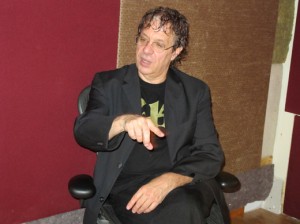
John King and all things CK have more to say.
And from the looks of things, he’ll need to move quickly. Tracking and mixing clients eager to revisit the legendary live room are emerging, as word of the resurrected Chung King spreads. It’s a buzz of activity that already has King and his chief engineer Ron Allaire, along with engineer Jamie Zabrek, on the move.
But King is also going steadily forward with his long-gestating plans to establish a multimedia production company, Chung King Live. King had begun to build that venture in a large ex-warehouse in Jersey City, but soon grew frustrated trying to do business in the state where he lives. “It’s a police state,” King opines of New Jersey. “It took me forever to get building permits. Finally I just put the NJ location on hold, although I still have the property.”
While he may have less space to work with in Manhattan, King has big plans for Chung King Live. A multifaceted entity, it will allow him to produce original video content, as well as provide artists with a cost-effective path to create their own videos. Simultaneously, he promises that the upcoming Chung King Records will be anything but your typical record company.
According to King, it’s time for him to go back to his first love of writing songs. “I’ll be producing and touching up unfinished songs for clarity in an ever-increasing sea of medium,” he says frankly. “Producers of the original variety are sorely lacking in the music chain.
“Chung King Records will be a simple, very common-sense path to finding music that you like,” continues King. “I want to distill it so that the artists that are really good and inspiring are all in one place. And let’s worry about one song at a time, like George Martin did with the Beatles. Instead of making a whole album full of crap, can we get a little flavor back?”
Rounding out the updated business model is an audio education program, whereby Chung King is already hosting small groups of advanced students. “I get the kids who know what they’re doing,” King says. “I take them back to songs like ‘Play That Funky Music White Boy’, where we were just using simple stuff.”
A Sonic Rennaisance
Both the studio at 36 West 37th Street and its newest owner have histories as chaotic as they are beautifully musical. Kindred souls are reconnecting. That could prove to be a very positive development.
“I want to take advantage of every square inch of this space,” John King says. “The expectations are high, but I’m going to work with the well-funded, and the beggars and borrowers, at the same time. I’m not particular about that. The ones who notice that the rooms sound good will come here.
“I jump out of bed every day now. Things are just getting bigger and better. Do I worry? Of course! But it’s like they say, ‘Do you want to worry or work?’ I may as well work.”
— David Weiss
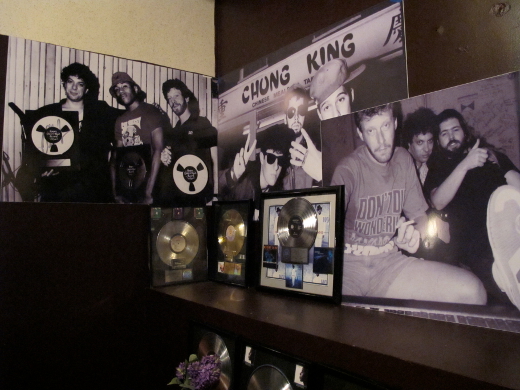
The halls are starting to show the history.

The Neve VR72 from downtown’s Red Room is at home in the Empire Suite.

Tape remains irreplaceable.

Another view of the studio’s famed live room.

A most royal panel.
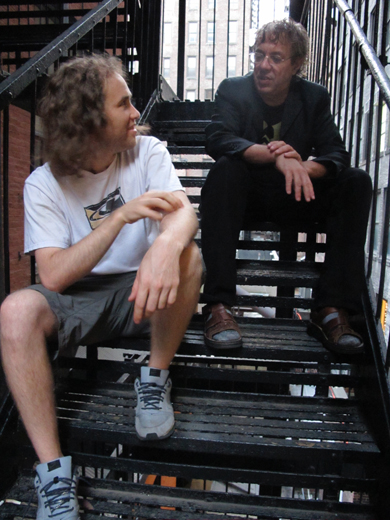
Fresh air, with engineer Jamie Zabrek.
GREATER NYC AREA: The summer slump may have hit some studios, but then again some others are cranking. We found artists such as Esperanza Spalding, Crystal Stilts, Tegan and Sara, Rick Ross, Cee-Lo Green, Bruno Mars, Robert Randolph and more have been recording in the city this month.
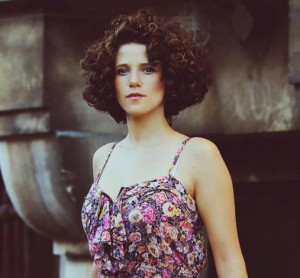
Cyrille Aimée
Let’s start at Flux Studios in the East Village, where French jazz singer Cyrille Aimée has just made her new album. Aimée and band spent a week in the Dangerous room tracking the album, which is being produced by Fab Dupont and engineered by Dupont and Daniel Sanint. Dupont has also been recording/producing NYC pop singer/songwriter Jay Stolar’s new album.
In other Flux sessions: Talib Kweli has been tracking in the Revolution room with several guests, including Rah Digga, and resident engineer Eddie Krakaur; indie-pop duo Tegan and Sara were in writing sessions in the Revolution and Fabulous Rooms; Actor Paolo Costanzo stopped by to oversee the recording of a song by Teddy Geiger for the show Royal Pains – tracked by Sanint and mixed by Mark Saunders (The Cure, David Byrne).
And on the technical tip, Flux reports they’re “ecstatic” about their new Focal SM9 and Elektra 1038Be speakers; finding a lot of excellent uses for the new Lauten Atlantis microphone (developed in collaboration with Fab Dupont), i.e. vocals (Cyrille Aimée), acoustic guitars and upright bass; and have upgraded all their rooms to Pro Tools 10. The Revolution room currently hosts an Avid HD I/O interface with an HDX card. Also, the recent event they hosted with PreSonus left Flux with the new Studio One software ready to go in every room.
A few avenues over, Germano Studios was busy with a wide spread of sessions including rapper Rick Ross who was in recording vocals with John Rivers engineering, Cee Lo Green mixing with Graham Marsh producing and engineering, K’naan recording vocals with Michael Franti of Spearhead, Japanese hip-hop artist AK-69 recording with Kaoru Hoshizeki engineering, and Brooklyn indie-rock band Snowmine recording basic tracks with Jake Aron producing and engineering.
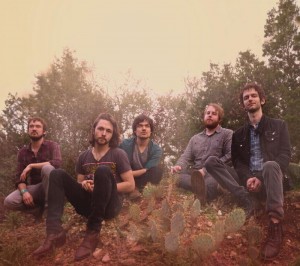
Snowmine
Also at Germano, Michael Bolton recorded vocals with Dave Tozer producing and Jason Agel engineering…Tozer/Agel also recorded with John Legend (vocals, piano, keyboards and guitars) in both Germano Studios…Anita Baker recorded keyboards and vocals with Barry Eastmond producing and Kenta Yonesaka engineering…singer/songwriter Jodee Seiders recorded with Chris Johnson producing, Gihan Wright and Dave Rowland engineering, and Cobra Starship was in for writing and recording sessions with Sandy Vee producing and engineering.
Meanwhile, jazz artists flocked to Sear Sound this past month: Esperanza Spalding recorded at Sear a for Universal Classics release – playing bass and tracking vocals in Studio C (“on her favorite Telefunken Elam 251”) with Jeremy Loucas engineering and French composer/DJ P.C. Solal producing…jazz pianist David Virelles mixed an upcoming release with Sear’s chief engineer Chris Allen… singer Tyler Houston tracked covers and standards with a band and horn octet, Allen engineering and Dave Suchanek producing… and ensemble The Clayton Brothers (John, Jeff and Gerald Clayton) tracked a new album for Concord Music, again with Allen engineering.
In other Sear sessions: HBO’s Boardwalk Empire returned to track some new songs – engineered by Stewart Lerman, and produced by Randy Poster… The Public Theater / Shakespeare Festival tracked the music for “As You Like It” with Gary Maurer engineering and co-producing with the composer Greg Pliska…composer Loren Toolajian produced tracks for Sesame Street with Allen engineering…and Chris Shaw tracked for “The Voice” for Universal Music Australia.
Psych-pop band Crystal Stilts recorded a new song at Saltlands in DUMBO, in full band tracking sessions with producer/engineer Jarvis Taveniere of Woods. Another Brooklyn psych-rock/pop band, Desert Stars, also tracked at Saltlands in July with producer/engineer Nick Stumpf (Caveman, French Kicks).
Comedian/director Louis CK returned to Stratosphere Sound in Chelsea to record music for Louie, Season 3. Also at Stratosphere…Brooklyn bluegrass ensemble Six Deadly Venoms mixed their new album to tape with engineer Adam Tilzer…NYC-based songwriting/production team Robopop (Maroon 5, Lana Del Ray) recorded with assistant Mike Nesci…and the Food Network and NBC’s Smash were in for sessions.
John Zorn was back at EastSide Sound in the Lower East Side, recording solo violin with chief engineer Marc Urselli for an upcoming release…Urselli – who just got back from touring with Lou Reed – also mixed the five movements of NYC composer/violinist David Fulmer’s first commissioned composition for saxophone and ten-piece chamber ensemble, to be released on Zorn’s Tzadik Records… mixed trumpeter Matt Holman’s new record, recorded drums, cello and vocals for cellist Leah Coloff’s new album, and recorded drums for percussionist Ravis Momin’s upcoming album.
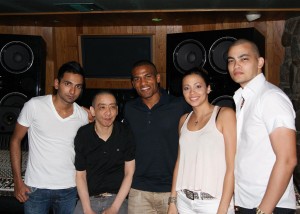
Apoplectic with engineer/mixer Serge “Sergical” Tsai (second from left)
At Jerry Wonda and Wyclef Jean’s Platinum Sound in Midtown…Suriname alt rock band Apoplectic mixed their upcoming album with Serge “Sergical” Tsai in Studio K. And the song “Blame” by Island Def Jam artist K’La (ft. Nas) was produced by Wonda for Wonda Music, and recorded and mixed by Tsai.
Several blocks downtown, producer/engineer Matt Gill runs his studio, The Key Room, out of the Shelter Island Sound complex – also home to the songwriting team, 1984, and Bob Power’s studio. Gill recently served as producer/musical director/engineer and mixer on a new mobile app for Whynoceros, recording guitarist/bassist Robbie Seahag Mangano (Grandmothers of Invention, Tom Morello), saxophonist Stuart Bogie (Antibalas, Superhuman Happiness, TV on the Radio) and violinist Kari Bethke (Bad Buka, Rana Santacruz).
Gill also recently recorded and mixed an acoustic performance by Metric in the Hotel Rivington penthouse as part of a campaign for the Sony Xperia Ion smart phones – with video produced by Brooklyn’s Mixtape Club. And – at Mavericks Recording in China Town – he recorded an album for Irish-music ensemble Streams of Whiskey live off the floor, assisted by Kevin Schinstock.
Further downtown at Engine Room Audio – Mark Christensen recently mastered 50 Cent’s new album, Murder by Numbers, assisted by Dan Millice and Benoit Holliger.
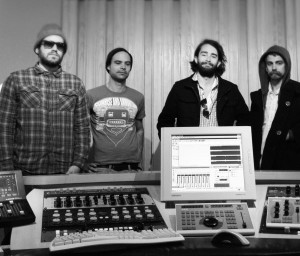
Boyfrndz at Engine Room (l-r): Aaron Perez, Joseph Raines, mastering engineer Dan Millice, and Scott Martin
Indie rock group Cloudeater – profiled here last year – recently teamed up with rapper Wale on the experimental hip-hop track, “Faces“, and turned to Millice to master the track which was released mid-June as a single. The track is the artists’ first track to have been Mastered for iTunes (iTunes Plus).
Indie experimental rock band Boyfrndz brought their self-titled debut to Millice for mastering as well. They originally released the album last year, but Millice re-mastered it for vinyl at Engine Room. The album, which was recorded to tape, was produced by keyboardist/producer Isaiah ‘Ikey’ Owens (The Mars Volta, Jack White) – you can stream the original release at Bandcamp.
Legendary engineer/producer Eddie Kramer recently tracked Robert Randolph up at Manhattan Sound Recording (MSR Studios), in Studio A, using the Endless Analog CLASP system, Studer A827 machine and Pro Tools HD. The sessions were for a side project that Robert is producing. Brett Mayer was the assistant.
Also at MSR…Def Jam artist 2 Chainz was in working on his album with Q-Tip producing and Blair Wells engineering, Make Layos assisted…NBC’s Smash has started recording again with Marc Shaiman producing and MSR’s Ian Kagey engineering in Studios A and B…Producer Nick Littlemore (of Empire of the Sun) and engineer Angie Teo spent a week in MSR Studio C working on a new project for Universal/Republic pop artist Mika…50 Cent worked on a new single with engineer Ky Miller and assistant engineer Gloria Kaba…and Gospel singer Donnie McClurkin has been working with engineer Chris Soper on a new project.
MSR also started cosmetic renovations on Studio B last month and look forward to having them finished before the end of the summer.
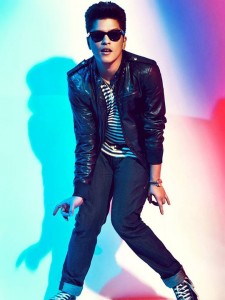
Bruno Mars. Photo by Sebastian Kim.
Meanwhile, pop star Bruno Mars has been working on the follow-up to his chart-topping Doo-Wops & Hooligans at Avatar Studios with producer Mark Ronson and engineer Alan O’Connell, assisted by Bob Mallory and Tyler Hartman. Mars has been recording out of Avatar Studios A, B and W.
In other Avatar sessions… Tony Bennett sang duets with Thalia and Marc Anthony in Studio C with producer/engineer Dae Bennett, assisted by Aki Nishimura and Charlie Kramsky… The Leap of Faith cast album was recorded in Studio A with producer Alan Menken, engineer Peter Karam assisted by Bob Mallory…Harry Connick, Jr. recorded with producer Tracey Freeman, engineer Vince Caro assisted by Tim Marchiafava… Gospel artist Hezekiah Walker recorded in Studio A with a 60+ piece choir with engineer Larry Sturn..and New York Voices recorded in Studio G with producer/engineer Elliot Scheiner assisted by Bob Mallory.
NYC rock singer/songwriter Patty Smyth (Patty Smyth & Scandal) recorded vocals for an upcoming Christmas album at Threshold Recording Studios, with producer Keith Mack and engineer Jeremy Sklarsky (Freelance Whales, We Are The Woods). Sklarsky also engineered sessions at Threshold for jazz musicians Ron Carter, Gene Bertoncini & John Abercrombie, with producer David Becker; rocker Madame Mayhem, with producer Mark Hudson; and multi-instrumentalist/producer Mark Rivera (Billy Joel, Ringo Starr Allstars) with Rodney Howard, Tony Tino and Greg Mayo.
Back in Brooklyn, Broadway star Chester Gregory (Dream Girls, Hairspray, Sister Act) has been working on his solo R&B project at Brewery Recording in Williamsburg. Working with producers Woodro Skillson and Taylor Gordon, and with engineer Andrew Krivonos at the controls, Gregory’s been laying down vocals and mixing three tracks for his project which should be out by the end of the year.
In other Brewery sessions…rapper Jojo Pellegrino has been back to wrap up his latest project, Machine Gun Pelle. Krivonos is mixing the 16-song album, produced in part by Lofey and UVex…electro-pop band Ch!nch!lla has been mixing their new LP with engineer Nick D’Allesandro…and Staten Island’s Thomas Jr. recorded and mixed his hip-hop + spoken word mixtape with Bryan Lampe.
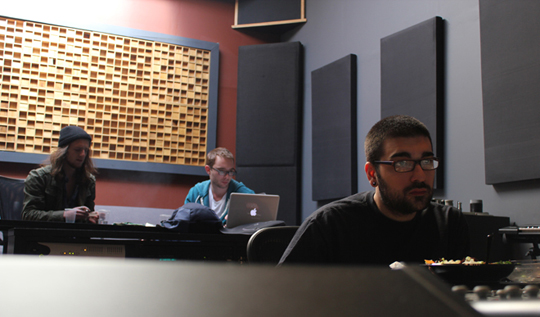
Ch!nch!lla at The Brewery with Nick D’Allesandro
And we know there’s so much more going on out there! If you’d like to be featured in “Session Buzz,” please submit your studio news to submissions@sonicscoop.com.
FINANCIAL DISTRICT, MANHATTAN: Putting a new spin on a classic can be a very risky endeavor. Unless you have no choice, that is – in which case you may as well gyrate away with everything you’ve got.
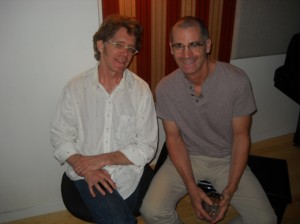
(l-r) Dubway's Al Houghton and Mike Crehore are a tenacious NYC studio ownership tandem.
That’s the exact challenge that Mike Crehore and Al Houghton, the founders of Dubway Studios, willingly took on in 2010. Having been given a long-distance heads up that the lease on their Chelsea recording warren would not be renewed, the pair made the daunting decision to relocate and rebuild – not an easy call after a decade-plus of constant refinements had established your studio as a dependable choice for music recording, mixing, and audio post clients of all stripes.
But after a serious think, Houghton and Crehore – who had first met in 1983 when both had overbuilt one-room facilities in the famed Music Building on 8th and 38th,before opening up their Chelsea studio in 1997– decided they were game. And if they were going to do it again, they reasoned, why not get it right this time? REALLY right.
“By the time you’ve built your third studio, you know what you’re doing,” grins Houghton, surrounded by the clean, artistic lines of the latest Dubway Studios, which now resides at 42 Broadway. “What all that experience taught us to do was build something that can work together and serve the most possible applications — from recording to post to audio books.
“In that sense, it’s about providing flexibility by learning what the clients want, and what the engineers who work here need. Whether you’re talking about monitor height, what gear should be in the room, or what shouldn’t be in the room, these are things you can only really do if you’ve been through it.”
Sonic Architecture
Exploring the latest Dubway Studios, Financial District Edition, which has been up and running since early 2011, Crehore and Houghton’s experience – an impressive 30 years of combined NYC studio ownership – is something you can feel. Unstressed feng shui, sunlight, and a serene sense of functionality pervades Dubway’s Main Floor, where light woods and visual art create a calming headspace that enables the clients, engineers, and talent to maximize the hours spent there.
The Main Floor of the complex that this positive energy pervades is centered around three control rooms, accompanied by two VO/instrument overdub booths, and a larger triangular grand piano room with plenty of space to hold a drum kit if needed. It’s an ideal atmosphere for small-scale tracking and music mixing for indie artists, as well as stereo and 5.1 surround mixing for Dubway’s numerous audio broadcast and film audio post clients — which have included HBO, Discovery Channel, Nick Jr., PBS, Showtime, McDonalds, iTunes, IFC, NFL Films, Twentieth Century Fox, and many more.
But the highly efficient Main Floor is only half the story at Dubway. In an innovative arrangement, Dubway shares the impressive penthouse Mezzanine studio with Engine Room Audio, which originally constructed the 1100 sq. ft. recording space and operates its own busy studios adjacent to Dubway. With 20 ft. ceilings, large iso booths of its own, and an SSL 4064 G+ console, the Mezzanine gives both businesses a no-compromises recording resource for its major label and indie clientele, while mitigating a massive overhead that would be prohibitively costly for either to shoulder on their own.
With a room of that scale in the mix, Dubway continues to build confidently on a music recording portfolio that includes Antony & the Johnsons, Devendra Banhart, Patti Smith, They Might Be Giants, David Byrne, Cyndi Lauper, Dar Williams, Alicia Keys, Joseph Arthur, Dan Bern, Richard Barone, and Cat Power, to name just a few.
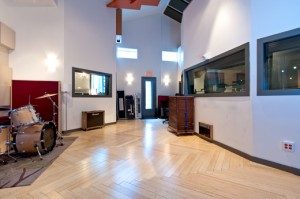
Room to record -- the spacious Mezzanine live room that Dubway shares with Engine Room Audio.
The result: a highly flexible facility that serves Dubway’s clients and engineering staff more effectively than the Chelsea location, which had charm — but also plenty of quirks, as that multiroom studio was constantly retrofitted and built out, to mesh with the additional audio verticals that Dubway added on to its service offerings.
Supporting Multiple Revenue Streams
Today, Dubway Studios has mastered a wide range of revenue streams that many other studios would envy. The facility has successfully positioned itself as a leading provider of audio post for TV, with mixing, sound design, and VO recording accounting for nearly half of their billable hours. From there, the list includes healthy doses of music recording/mixing, audio books, and remote recording (such as the iTunes “Live from SoHo” series). A relatively recent addition is location audio, with Dubway personnel going onsite with boom mics and lavaliers to provide top-quality audio to TV, reality shows, and film clients.
Once the two industry veterans had settled on the space at 42 Broadway as their next professional home, Crehore explains the thought process for designing it. “We started with an existing footprint of rooms and said, ‘We could make this work as three control rooms and some live spaces.’ We knew we also needed a lobby, a tech room where the assistants and interns could hang out and store the gear, and minimal office space. So when we walked through and saw what was going on we said, ‘How do we make this as flexible as possible?’”
Instead of knocking down walls or fighting physics, Crehore – an experienced builder and woodworker – carefully evaluated each of the existing rooms, calculated maximally inclusive listening and viewing angles for engineers and clients, then created custom mixing desks that would best enable it all. Floors were all floated and extended to the full room or not as space and interior/external noise considerations dictated — both VO rooms are quieter than anything they have ever worked with, and roomier as well. Additionally, audio tielines, and a hybrid system of high-resolution security cameras and iChat, can connect any room to any other in the facility.
Although they have different proportions, each control space – nicknamed “The Red Room”, “The Blue Room,” and “The Sandbox” – is designed to shoulder the same load. Equipped with Pro Tools HD3 systems, Dangerous Music monitoring systems, and Genelec or Yamaha monitors in stereo and/or 5.1 surround configurations, the rooms are intimate, but still give Dubway’s engineers sufficient space to craft a highly accurate mix while hosting clients.
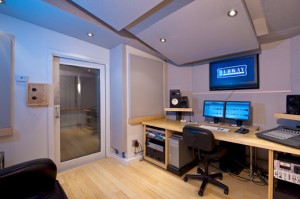
One of the three Main Floor control rooms maximizes its space.
Speaking of engineers, Dubway’s longevity in the NYC recording scene has made it a key breeding ground for some of the city’s top talent – many of who have stayed loyal to the facility for years. On any given day, Houghton and Crehore may be joined in battle with Operations Manager Brandon Hollely, Remote Recording Manager & Chief Engineer Jason Marcucci, along with Keith Rigling, Chris Abell, Mike Judeh, Stephen Schappler, Chris Camilleri, Chris Montgomery, and Josh Tucker. Assistants Josh Friedman and Josh Burnette are also onsite. Eric Spring, John Thayer, and Anthony Gibney were all active Dubway engineers who recently moved overseas, and the producer/engineer/mixer Emery Dobyns (Travis, Fran Healy) is an alumni of the system.
Live Room Sharing 101
Whomever at Dubway is working a session in the Mezzanine upstairs, they’re part of a team that has learned to accomplish something tricky — but which may be increasingly important for studio survival in NYC: the aforementioned sharing of a live room.
As Houghton points out, making the system work starts with the intangibles. “Ultimately, there’s a lot of trust and mutual respect in sharing a room,” he says. “Everyone’s gear is in there, everyone’s using it, and it’s easy to be very overprotective of that stuff. At first Engine Room and Dubway were all nervous about it, like, ‘What if the other guy books it out for the whole year?’ But as it turns out, the bookings are easy to work around each other. Our staffs have been cultivating a rapport, so booking from one session to another is seamless. And we’ve also all learned how to zero out the space so everyone is comfortable with it.”
And while Dubway Studios and Engine Room may have their own distinct corporate cultures and clientele, Google has served as the Great Logistical Unifier for Everybody (GLUE). “We have a Google calendar we share with each other, and there’s also a ‘Mezz Board’ Google group that we collaborate on,” Crehore adds. “So if there’s a piece of gear that everyone needs to know about, then that comes up on the Mezz Board: ‘Channel 23 of the SSL is funky today!”, and everyone avoids it. Everyone sticks to the system, and it works.”
Mainland: Manhattan
While there’s an undeniably building buzz about Brooklyn studios the Dubway trail reminds that, for some, Manhattan will always be an essential address.
“A good deal of the business that we get is due at least partly to the fact that we’re in Manhattan,” Mike Crehore confirms. “A lot of our clients live in Brooklyn, but especially when it comes to audio post their business and offices are still in Manhattan – so the new location actually became an easier commute for some of our clients.”
It’s also intriguing — and not a little bit inspiring — that this sage and savvy studio tandem committed to building their third facility after what must have been the deepest of gut checks. Then they delivered, with a lean and mean full-service studio that’s as technically proficient as it is appealing.
“The bottom line is we love this business,” says Al Houghton. “We’re musicians ourselves and we love working with musicians, and the creatives doing the TV shows. There’s a great crew to collaborate with here, and that’s always a fun adventure. This business is not for the faint of heart. But it is satisfying.”
– David Weiss
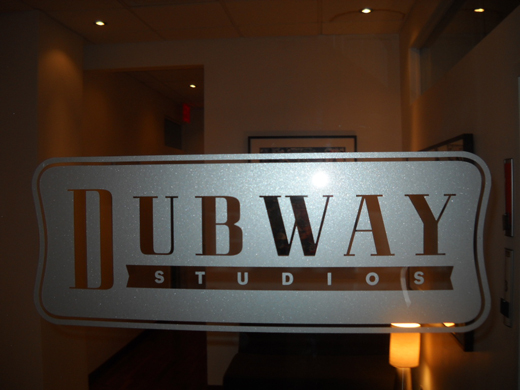
There's a way for us: Entré Dubway.
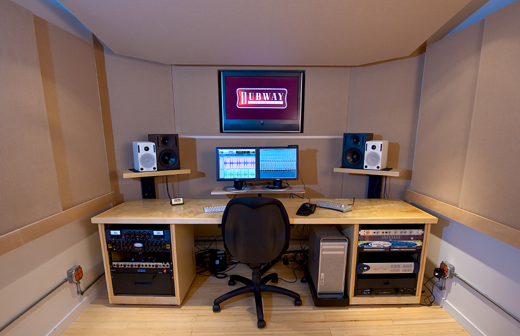
Each control room fits right in for audio post and music mixing. Note the desk custom made for the room.
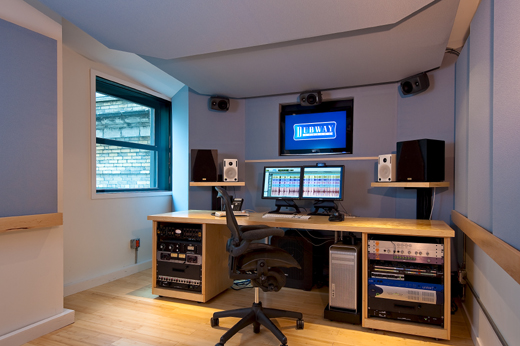
Set up for 5.1 surround.
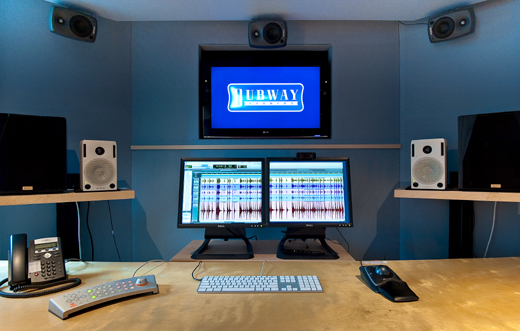
Up close on the command view -- clean lines and lack of clutter make the Dubway rooms hospitable for long sessions.
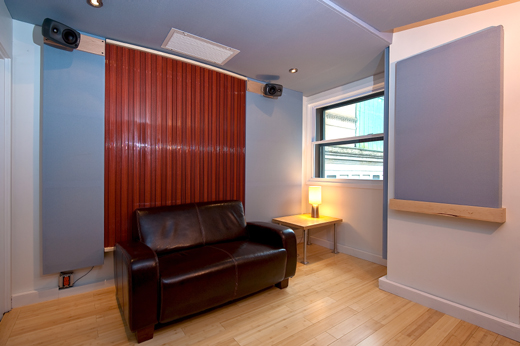
Clients can get comfortable.
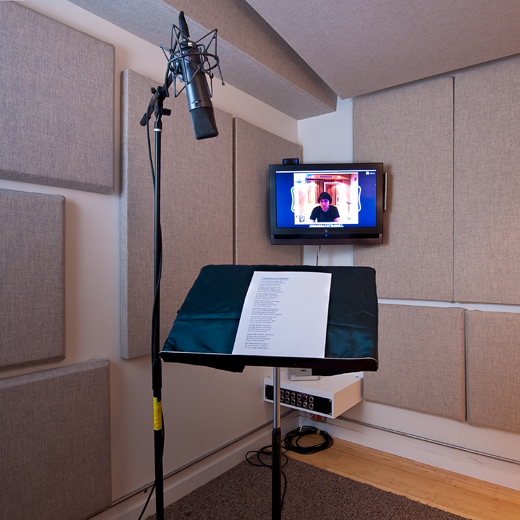
Video tielines keep all spaces visually connected.
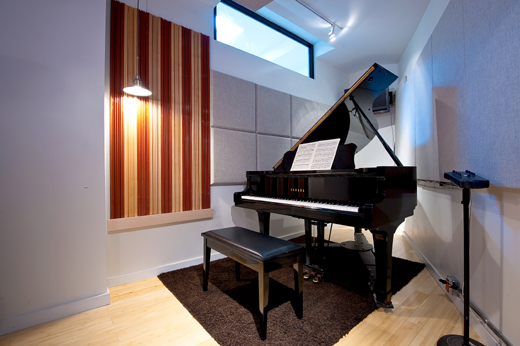
The piano room can also host a full drumkit.
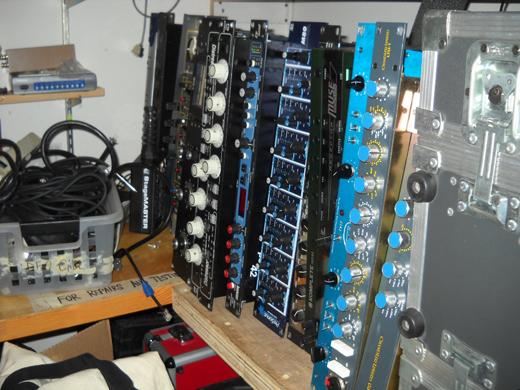
Gear to go: Outboard at the ready for switching into Main Floor control rooms or the Mezzanine.
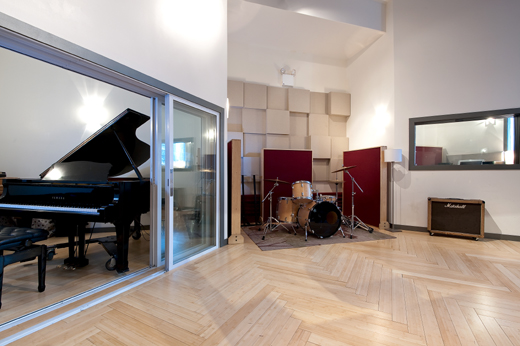
Another view of the Mezzanine live room.
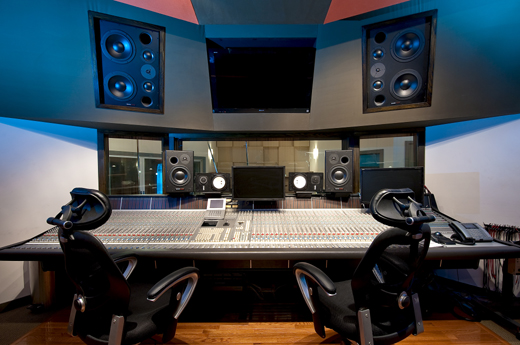
An SSL 4064 G+ looks out into the live space.
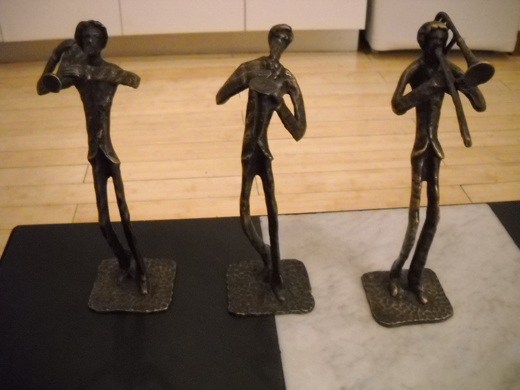
Join this merry crew!
FLATIRON DISTRICT, MANHATTAN: Can you feel it? The 4th of July is just past…but revolution remains in the air.
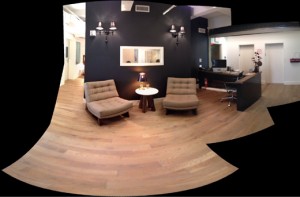
Things seem a little different right away at Heard City.
The uprising is stemming from a sonic sector that seemed to have grown more or less predictable – to the comfort of clients and facilities alike. But even audio post has its time to change, and make a jailbreak from the mold. In New York City, that time is now.
The epicenter for what may be a welcome new era? It’s in the Flatiron District, in a new set of mix suites that calls itself Heard City. What they do – mixing and sound design for TV, commercials, and film — may be familiar, tried and true, but how they go about it is another story entirely.
While Heard City’s revisionist workflow may not be the shots heard ‘round the world, it points to a new direction in an industry that, frankly, could use some shaking up.
Timing is Everything
In NYC’s busy but embattled audio post scene, news flashes of late have been pretty much confined to one of two storylines: a) Mixer switches to a new facility, or b) facility goes out of business.
With the increasing need for established audio post houses to recruit mixers with a “following,” i.e. a devoted and dependable clientele that would work with them wherever, crosstown moves by the city’s most talented pros come as no surprise. And with what’s politely called “downward pressure” on pricing for audio post services – caused by everything from in-house mix suites at ad agencies to reduced production budgets – mass casualties of decades-old post houses have been a fact of life.
So eyebrows raised this past January when the in-demand mixer Phil Loeb left behind his partnership position at Sound Lounge, along with top Sound Lounge mixer Keith Reynaud, and announced that they would be starting their own audio post venture with another industry veteran – Gloria Pitagorsky – as Managing Director. The scale of their plans appeared as grandiose as they were counter-intuitive: a 7,000 sq. ft. multi-room facility in the fashionably expensive heart of the Flatiron.
But just seven months later Heard City has five fully-equipped suites, six mixers, a staff of 12, a beautifully appointed habitat, and – most importantly – a bustling schedule of blue-chip clients including Budweiser, IBM, NFL, Google, ESPN, AT&T, Time Warner Cable, Microsoft, American Express, Dish Network, and Target.
Now it looks like this ambitious trio’s timing wasn’t insane. It was right on.
“It was a perfect confluence of human energy and technology,” says Loeb of the group’s decision to go their own road this year. “Now is a good time because we’re young – except me, I’m the adult! — we have a lot of energy, and there were a lot of sharp people we knew waiting for an opportunity. And with the Pro Tools HDX system, technologically, it couldn’t be a better moment.”
Loeb was a member of the original Sound Lounge team since 1998; Reynaud was on board there since 2002; and Pitagorsky had turns at audioEngine, Nutmeg, and HSR before a stint at Sound Lounge introduced the executive to her future partners. So this is a crew that understands full well the perils of opening a large audio post facility when others are closing.
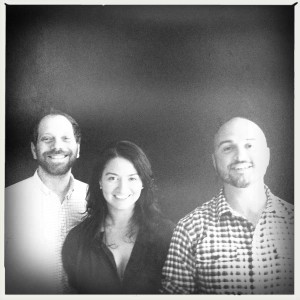
(l-r) Philip Loeb, Gloria Pitagorsky and Keith Reynaud had a few things they wanted to try.
“What’s risky about this move?” says Loeb. “Of course, there’s the overall economy: Everyone in this business worries something could happen which would be destabilizing to our corporate clients. The ad agencies, film and TV production companies, and editorial companies are also building in-house facilities. And simply being involved in such a big investment, in both time and money, would feel risky to anyone.
“But I feel if we continue to do the quality of work that is both creatively and technically great, our clients will continue to work with us.”
“Whether the medium is TV, film, or the Web, directors still want to produce a high-quality product,” Pitagorsky adds. “When it comes to graphics, visuals, or sound, they still want to reach out to people who can deliver the high end, and we like to think we’re on that list. The demand for that will never diminish. Budgets may be all over the place, but the desire to be involved in great work is why we do this.”
Team Workflow
Classic sentiments, to be sure, and quality never goes out of style. But at the core of the Heard City founders’ desire to start their own boutique was their recognition of room for innovative new angles – by evolving some of what had been unchanged in audio post for decades, Loeb, Pitagorsky, and Reynaud also sensed a tantalizing opportunity.
The first thing that meets the eye at Heard City’s expansive space is the clean, natural lines of architect Wayne Turett and Brooklyn-based design firm Brook Landscape. Sunlight, natural wood, unconventional wall surfaces, custom furniture, and reclaimed materials distinguish the expansive loft boutique as a particularly comforting place to work.
But the feng shui is strictly a complement to Heard City’s highly flexible workflow, which sees six mixer/sound designers constantly rotating through five identically-equipped suites. The result is an environment that ditches the top-heavy star-mixer system in favor of something far more democratic, where collaborative audio teams spring up spontaneously around a project and speed their way to an inspired result.
“In Heard City, we are all ready and willing to pitch in on any project — each mixer is not his or her individual business,” says Loeb. “In a creative environment, we believe that our clients will get the best product if we collaborate, cooperate, and share projects. In our system, people bring their best to a multifaceted project – one person does the music editing, another does the dialogue editing, another does sound design. We can put our best three or five mixers on one job. Clients who come here realize it’s a team effort, and that’s what makes our place special.”
Mixer/sound designers Jodi Levine, Evan Mangiamele, Cory Melious, Brian Scibincio, and Eric Warzecha all demonstrated that they were on the bus before being hired full-time at Heard City.
“We want mixers and sound designers who are flexible, who understand our way of working, and understand they’ll be moving from room to room,” Loeb explains. “They get that this isn’t about the owner of the company having the biggest room and the nicest console – it’s about what’s best for the clients. The engineers are putting their egos aside, so we can do the best possible work.”
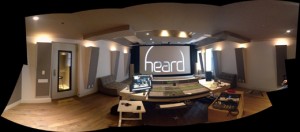
Inside one of the identically-equipped studios (click to enlarge).
Picks to Mixture
After an optimum software/hardware workflow was agreed on by the Heard City team, Mangiamele stepped up to implement a uniform configuration in the mix suites.
The result is Avid Artist Control Surfaces in all the rooms (except the “Cinema Room,” which has a 24 fader D-Command) running Pro Tools 10 HDX, and plugins including the Waves Mercury bundle, Izotope RX2 noise reduction suite, Altiverb Convolution Reverb, Audioease Speakerphone, and Native Instruments Komplete Ultimate. Meanwhile, outboard includes GML 8300 Transformerless Mic Pres, Empirical Labs Distressors, and Avid Eleven Rack.
“Our philosophy from the beginning is to have rooms with total parity, so that everyone has all the same tools as everyone else – 100%,” notes Mangiamele. “A project may start in one room, but it can move very easily to another one if needed. Every room is set up the same – all the buttons are in the same place, and Input One is Input One no matter which suite you’re in. So you don’t have to think about it all. You’re just at home.
“Everything is facilitated by having a big Linux server connected via fiber so sessions can move back and forth very quickly. As a result, mixers/sound designers can pick up another person’s sessions, and we can also see what the rest of us are doing. Most of us have worked together for a long time, we’re very familiar with the way the others work, and we frequently bounce ideas back and forth: ‘What are you using for a reverb? Or a compressor?’ This system makes it really easy for all of us to work together.”
The all-important speakers in the mix suites, which were tuned by NYC-based acoustician Chris Harmaty, are towering B&W 800 series units that are more commonly found in mastering facilities. “We like to think of what we do as mastering for TV,” says Mangiamele. “We’re the last step in the chain, so we want the clearest, most transparent speakers. A lot of people I’ve talked to call this overkill for commercial rooms. They have a point, but that’s one area where we didn’t want to sacrifice quality.”
Mangiamele acknowledges that getting everyone on the same page about equipment choices and workflow techniques was by no means automatic. “It was a process. But the mixers pow-wowed for a couple of months, and as a group we all decided what would be best. Some of us made compromises, but we were all very open and excited to get working in here. It can take a day or two to learn a new control surface – that’s OK. The little compromises are worth the parity we achieved in the rooms.”
Taking The Long View
What makes the six-mixer-to-five-rooms ratio particularly integral to the Heard City setup is a corporate culture that emphasizes balance between work and living. By acknowledging a world outside of the mix suite, the company’s founders believe that they’ll encourage maximum creativity and results in the long run.
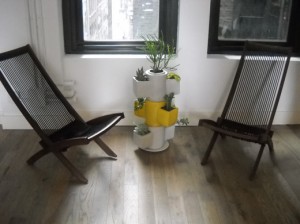
Get a breath of fresh air.
“You work hard, you do great work, but you live life,” says Pitagorsky. “If you want to check out for a week and go with your family to another state, you do that. Our clients understand that, and that’s part of the trust they have in us – that any mixer you work with here is great.
“That outlook puts people in a good head. Yes, we have a number to make, but it’s not about pressure to go and hustle. Instead, this is a collaborative approach to the business model.”
Or course, Zen will only go so far in the ever-intensifying field of NYC audio post. Anyone involved better have a portion of themselves that eat, sleeps, and breathes this competitive sonic craft – and that attitude pervades Heard City.
“As I’ve worked more and more in audio post, I’m increasingly attached to my clients,” Phil Loeb says of his personal motivation to excel. “It’s exciting to see people’s creative vision coming to fruition. Whether it’s a simple mix of music and VO, or a more complicated sound design, I like accomplishing things for people. To see a campaign we worked on win at Cannes, the One Show or any industry award – that to me is very fulfilling.
“Also, in audio post today we’re not just doing the mixing or sound design anymore: We get to be, in some ways, the audio director. So every mix is different, every job is different, and the velocity at which we have to complete these jobs – and put on our creative-thinking caps – keeps quickening. That’s very stimulating.”
Launched in 2012 with a blank slate and a clear vision, it’s intriguing to see the updated model that Heard City’s founders have launched.
Only time will tell if their gamble pays off in the long run.
In the meantime, be assured that the rest of the audio post world – and the choosy production community it serves – will be watching and listening very carefully.
— David Weiss
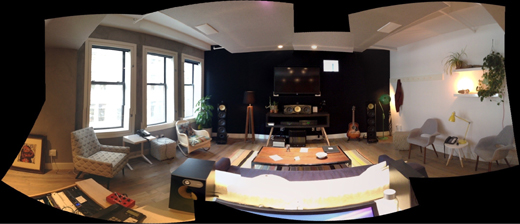
Mix suites can be mixed-and-matched,
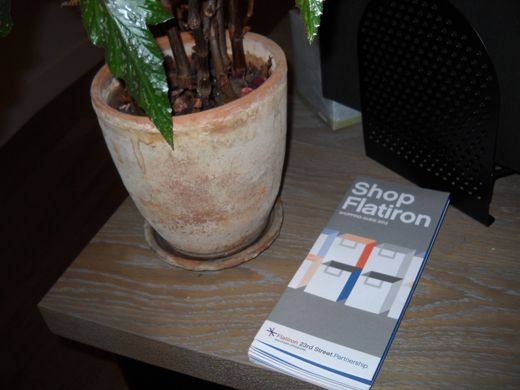
The Flatiron is a certifiable NYC audio post hub.
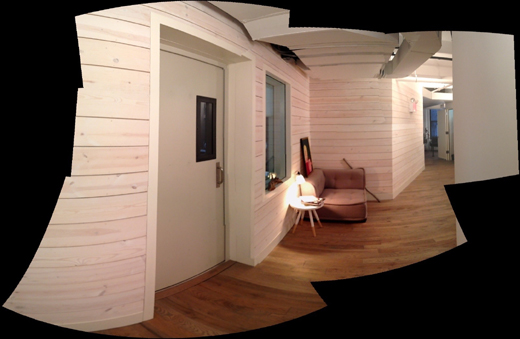
Tour the interior.
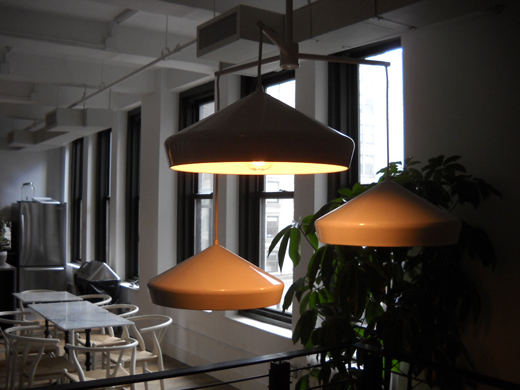
Light and more light.
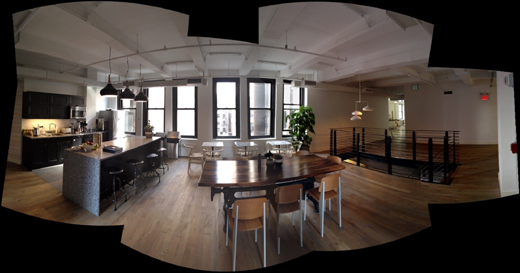
Uncommon common area
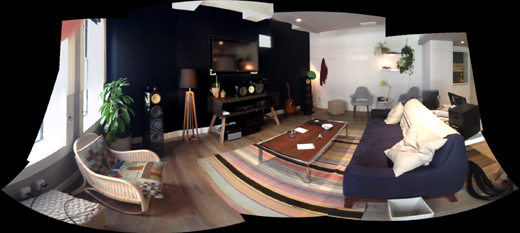
Another mix room view.
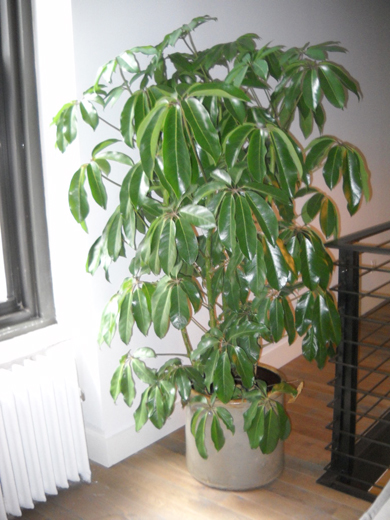
Oxygen sources abound.
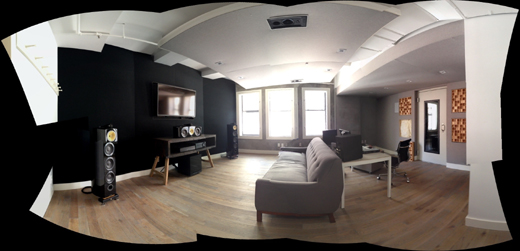
Mix room redux
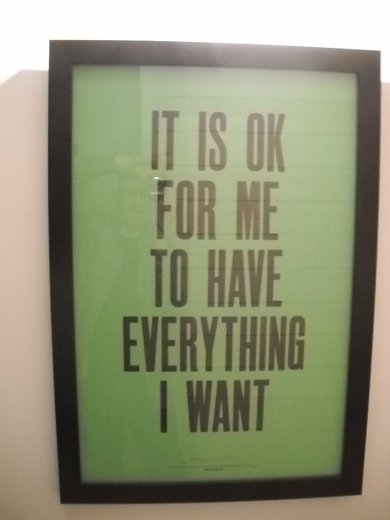
Agreed?
ELTINGVILLE, STATEN ISLAND: For recording artists, a stay at a destination studio has long stood as the ultimate arrival.
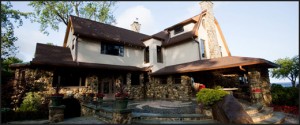
Expand your mind, soul, and music at Nova Studios. (click to enlarge)
Designed to support creativity not just with gear and a tuned room, but via an immersive atmosphere where working, living and rejuvenation all converge in one location, destination studios are something to aspire to: Before you can hone your craft at one, you need to earn the privilege.
There are plenty of artists in the New York City area – and worldwide for that matter — who have very much won the right to get away for a few days and focus purely on the act of music creation. But circumstances keep on conspiring to keep them sweating it out in the heat of the city: already a relative scarcity, the ranks of destination studios have, not surprisingly, been thinned.
In the Northeast, Woodstock’s Bearsville is long gone. The stunning Allaire Studios, in Shokan, NY, left us all too soon with its closure in 2008. And while numerous other recording lodges beckon throughout the region — dotting the banks of the Hudson River, the shores of New York lakes, Long Island Sound, and Catskill mountaintops — they can take significant time and effort to reach.
What if there were a destination studio available to the region that magically erased the compromises – one that offered an isolated environment, great natural beauty, distinctive acoustic spaces, sharp engineering talent, affordability, and was somehow within a stone’s throw of midtown?
In fact, all of the above attributes describe Nova Studios in Eltingville, a quiet hamlet on Staten Island’s South Shore. Formerly a composing and audio post facility for the private use of an accomplished filmmaking family, Nova has transitioned to a commercial recording and mixing studio. For everyone in search of headroom and fresh space to create, this development seems to be a very good thing.
A Different Design
Situated within one of two spacious homes on the property, all it takes is one step inside Nova Studios to dispel any preconceived notions you may have about Staten Island. The view outside the expansive glass wall of windows in the living room – which has been transformed into the studio’s main live room – provides a breathtaking panorama of Raritan Bay. Step onto the huge, private back lawn, and a unique angle on northern Monmouth County, NJ, awaits across the wide waters.
If you’re staying overnight, or for a week or a month, your bags will head upstairs to one of several well-appointed rooms in the house. A live-in cook is available to prepare meals in the large kitchen, or band members are welcome to decompress there with some culinary prep time themselves (and many do).
Owned and operated by filmmaker and music enthusiast Frankie Nasso, helming a recording studio is nothing short of a dream come true – he’s created an environment where passions for both the visual and acoustic arts can flourish. On the all-important engineering side, the skills of Ryan Kelly or The Jerry Farley will be at your disposal (freelance engineers are welcome as well, and an assistant is provided) overseen by studio manager Stephen Hennig.
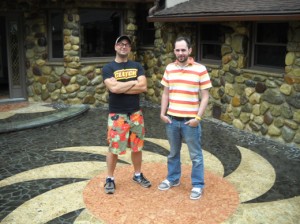
(l-r) The Jerry Farley and Ryan Kelly of Nova Studios (Photo: David Weiss)
For Kelly, who began helping with Nova Studios’ transformation into a commercial facility in 2010, the facility now represents a rare one-stop shop for musicians and producers.
“I think it’s one of the few destination places where you can do it all,” he says. “You can come here, do the production, mixing, and Jerry’s even done mastering. It can be nice to do a record at a studio in the city – you walk outside and you’re in the middle of Times Square – but if you want to focus 100% on a record and still actually be in NYC, that’s one of the unique things about working here.”
A Seattle native, Kelly graduated from Full Sail, then moved to NYC six years ago and kicked off a globe-hopping engineering career (Beyoncé, Matisyahu, Nico Muhly, Opeth, Slash, Valgeir Sigurðsson, Tom Morello) that exposed him to best studio practices, worldwide. When Nova Studios’ owners reached out to Kelly to help out with the redesign, he was ready with ideas that would simultaneously emphasize flexibility, reliability, and 21st Century workflow.
“I think we get too caught up on trying to recreate great gear designs of the past,” Kelly says, “I love the Beatles as much as the next person, but I think they would have appreciated having Pro Tools and the capabilities we have now available to them. We should be trying to push forward to create new sounds, and trying to make records that people want to recreate in the next generation.”
A Uniquely Inspiring Live Room
While Nova Studios offers a number of fully networked spaces for tracking, the epicenter of the facility’s groundbreaking aspirations is undoubtedly the aforementioned living room. Not only does it sport highly inspirational views, but it also has a variety of reverberant surfaces and sectors within its 1,000 square feet — a combination that distinguishes it as one of the region’s standout recording spaces.
Whole bands, and up to a 10-piece orchestral recording ensemble, can comfortably track together in the living room, and clients including Harry Belafonte, Katherine McPhee, Winds of Plague, Ryann, The OCC Band (featuring Paul Teutul Sr. of the Discovery Channel’s “American Chopper”), Ashanti (voiceover work); Victor Ortiz with Bobby Cruz y Richie Ray, Gravesend, HUNG, IKILLYA, Up for Nothing, The Last Stand, and Brazilian singer/songwriter Julia Mallmann have done just that.
But its standout strength may be for capturing drums: By moving the kit or the microphones, anything from a Bonham-sized earthquake to airtight close-miked sounds are available.
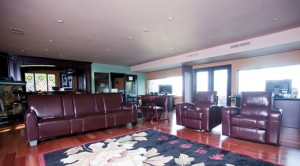
The house's living room may also be one of NYC's best drum rooms. (click to enlarge)
“There are so many sweet spots,” Farley notes. “We can put a mic next to the stone fireplace, or next to the bar with its dark redwood and stained glass window. The open kitchen is adjacent to the living room, and that’s got tile and marble that’s reflective in such a good way with drums.
“And I’ve never had a complaint about the view. Watching storms roll in on the water is beautiful. If it’s early you can see the sky turn orange with the sunrise, or later on you can literally catch the moon coming up over the water. To feel inspired by that kind of view is an incredible experience for any musician.”
Modern Gear, Modern Sounds
Follow the living room’s microphone tie lines and they lead you to the small but acoustically accurate control room downstairs, where the honed workflow enables Kelly and Farley to work quickly and transparently as their clients create. A Digidesign C24 control surface runs Pro Tools 10, complemented by Adam S3A stereo monitors or a Genelec 5.1 8130 monitor system for composers, TV and film work.
Inside the box, an extremely comprehensive array of plugins and virtual instruments are onboard the Apple 8-core MacPro. Meanwhile, a solid mic locker – including a Bock Audio 251, a pair of Royer 122V’s, two DPA 4011’s, plus Neumann KM184’s and U87’s – are on hand to capture what happens on the outside. The owner’s personal collection of classic electric guitars is on hand for the six-stringers, and a Tama Birch-Bubinga drumkit are part of the available instrument selection.
Following the thinking at Manhattan facilities like Germano Studios and Quad Studios’ Q1, the outboard gear puts a heavy emphasis on modern boxes. Kelly specified pieces such as the Presonus Anthony DeMaria Labs 600, Vintech Audio 473, Milennia HV3D, Dangerous 2-Bus LT, and Chandler Limited Germanium Compressors, and a Focusrite Liquid Channel as input and sound-shaping options. The Manley Massive Passive, Manley Stereo Pultec EQ, and A Designs Hammer EQ are all in the producer’s rack as well.
“I hate it when studios skimp on EQ’s – you may find a Pultec, but outside of that you rarely find a cool equalizer,” he states. “The Liquid Channel is interesting, because with that piece – and plugins in general – you can get too caught up in the way something is supposed to sound. Forget what the knobs say or what it’s allegedly emulating. Instead, take the time to pull up a good sound – my favorite thing is using equipment for what people wouldn’t usually think to use it for.”
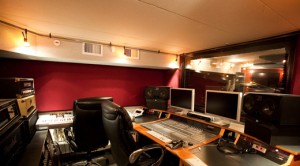
The control room is made to move fast.
On top of the producer’s desk sits a tightly-clustered treasure trove of amp heads for guitarists and bassists, including an Ampeg SVT VR, VOX AC30H2, Randall RM100, Peavey 5150 II, Peavey Classic 50, and Sovtek Mig-50. All are quickly selectable via a custom amp patch bay that Kelly made, for quick switching between the Marshall 4×12 Guitar Cabinets, Madison Custom 4×12 Guitar Cabinet, and Ampeg 4×10 Bass Cabinet that are in the adjacent isolated recording space, upstairs in the live room, or anywhere else in the house that sounds good.
“Everything here is wired so that you can go from getting an idea to recording it as soon as possible,” says Farley. “We’ve got a Radial Engineering splitter, so we can run up to seven amps and four cabinets simultaneously – that’s big for my guitar sounds. This way we can make changes quickly while we’re in front of the monitors: your mix is in phase, the compression is set, and you can hear the changes in real time.”
So Near, and Yet so Near
If you’re curious about checking Nova Studios out, access is a snap. For those who are blissfully free of a car, pickup from the Staten Island Ferry (about a 25-minute drive) or the nearby Staten Island Railway can be arranged. Additionally, the Manhattan-originating X1 Express Bus stops two blocks from the house. And for those who want to travel like a VIP, Nova can also provide transportation in their Mercedes Sprinter “JET VAN,” a custom-outfitted BatMobile of sorts, equipped with Direct TV Satellite, Blue Ray DVD Player; Wi-Fi, and a mini-fridge packed with whatever their guests request.
All it takes to get out here is an open mind – enacting a mild sense of adventure will lead artists and producers to a place that they’ll almost surely consider for their next intensive project. Daily and weekly studio rates are approximately half of the standard ticket in Manhattan and Brooklyn, and the optional living accommodations are equally cost-effective.
“I hadn’t been out to Staten Island, myself, before I started working here, and it does feel like a mystery destination,” Kelly says. “In LA, no one thinks twice about sitting in traffic 45 minutes to get down the block, but here in NYC people can think a 30-minute trip is like going to a different planet. So the challenge we face is really just getting people out here to see the studio,”
A Brooklyn native who attended high school in Staten Island, Jerry Farley understands the stigma that often accompanies New York City’s southernmost borough, but emphasizes the advantages to be had for those who make the short trip down to SI. “It feels like you’re not in NYC, yet you are,” he adds. “I have plenty of studios available to me where I can be part of the hustle and bustle if I want. This studio has bird’s nests and a bay outside, instead of a Broadway Theater. But I didn’t have to travel upstate – we’re in NYC.”
Ensconced in a little pocket of paradise, Nova Studios gives artists an enticing new escape hatch. The result is the kind of contradiction everyone can welcome – a creative place that feels like it’s a world away, without ever having to leave town. “We’re not struggling to make the rent here, so everyone can relax,” Farley says. “The time is spent on the music.”
— David Weiss

Re-energize with Nova's rewarding view of Raritan Bay and the private grounds outside.
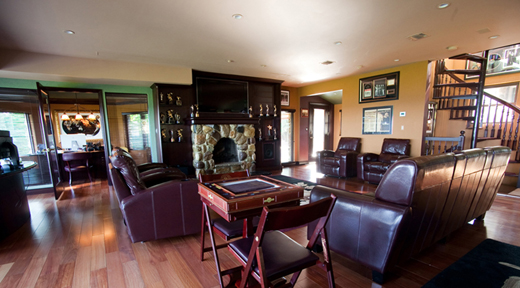
Another view of the 1,000 sq. ft. living room/live room
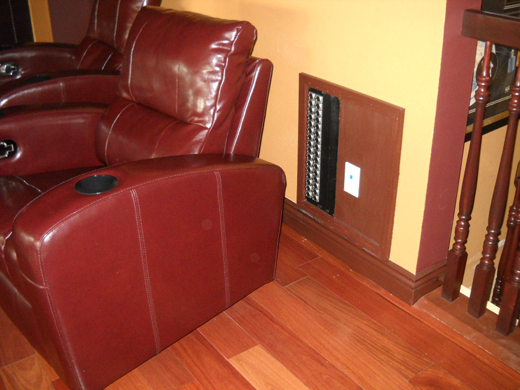
The live room's mic tie lines panel and Ethernet port for the Aviom personal mixers. (photo: David Weiss)
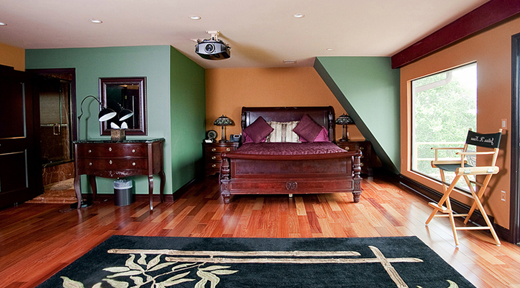
Dream about drums.
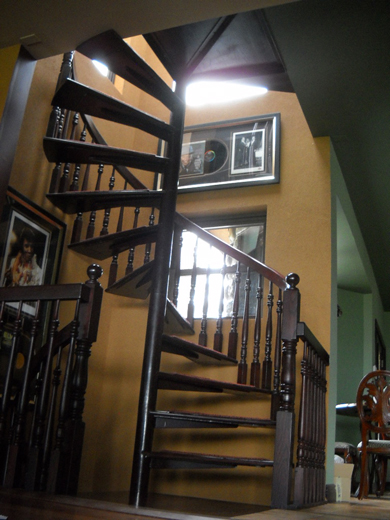
Time to head down to the control room... (photo: David Weiss)
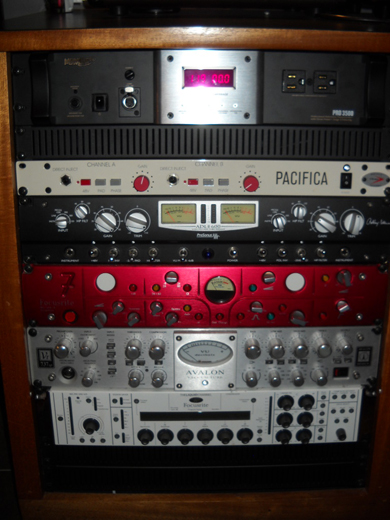
Outboard is selected for sonics, reliability and flexibility. (photo: David Weiss)
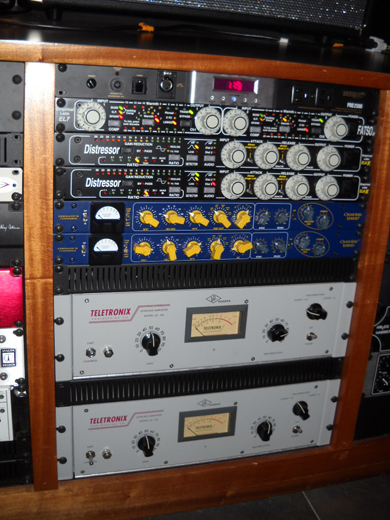
The dynamics rack (photo: David Weiss)
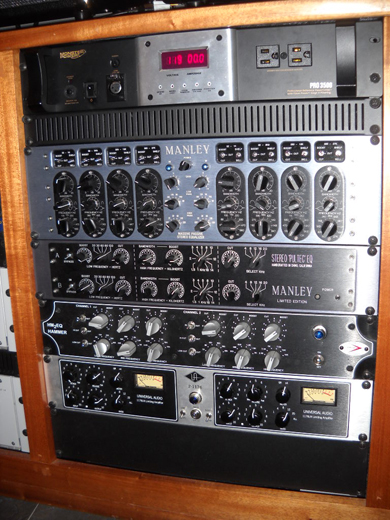
EQs shall not be skimped on! (photo: David Weiss)
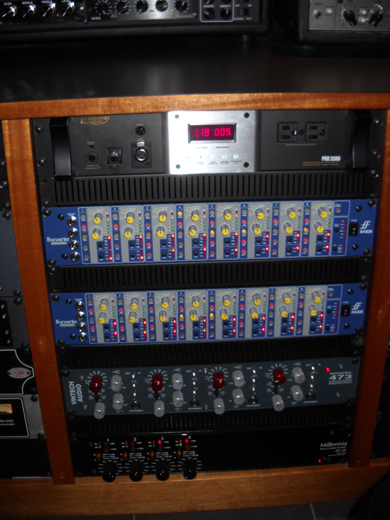
Mic pres are manifold. (photo: David Weiss)
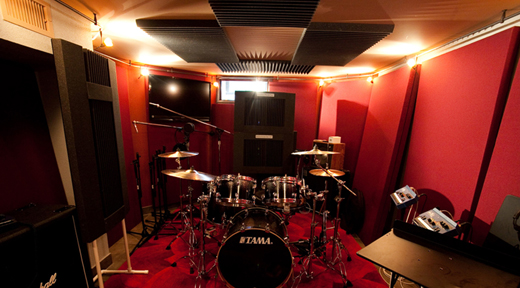
Another place for the drums -- the downstairs iso room, adjacent to the control room.
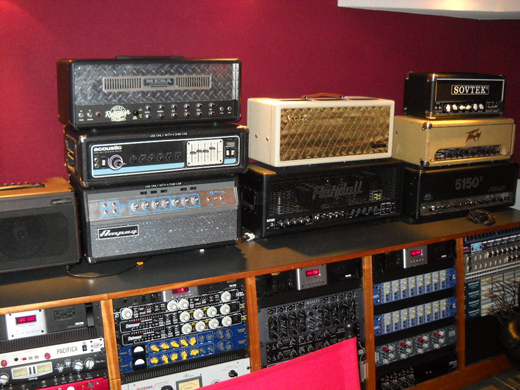
Back in the control room, amps top the producer's desk (photo: David Weiss)
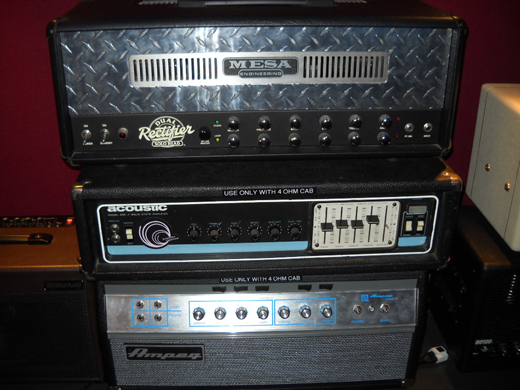
The EQ on the Acoustic amp takes you to a Happy Place. (photo: David Weiss)
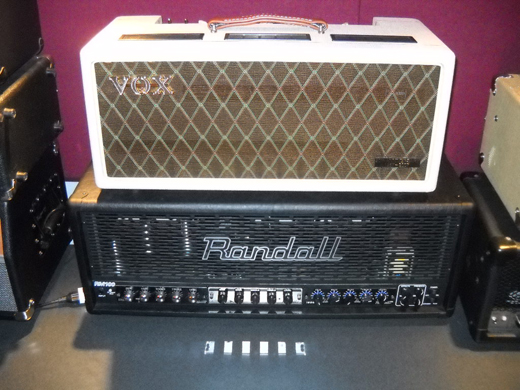
Best buddies! (photo: David Weiss)
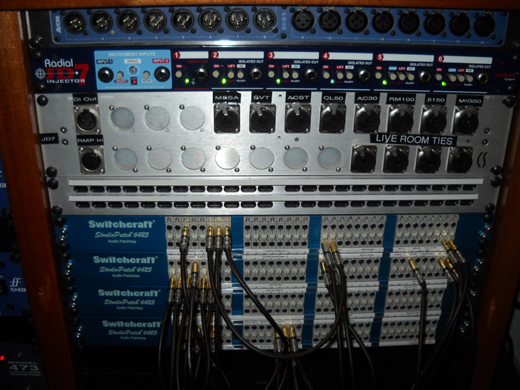
The custom amp patch bay allows Kelly and Farley to quickly dial up powerful sounds. (photo: David Weiss)
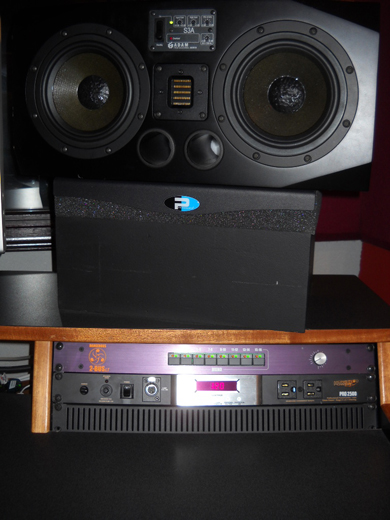
Adam monitors and the Dangerous 2-Bus. (photo: David Weiss)
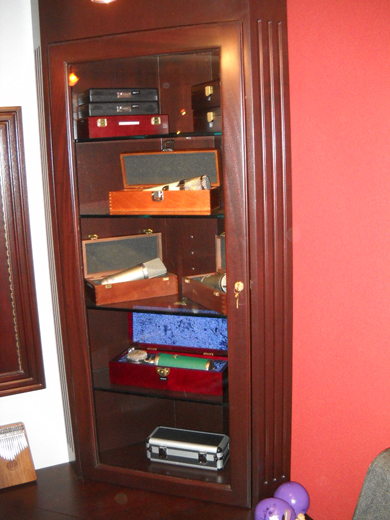
Ode to mics. (photo: David Weiss)
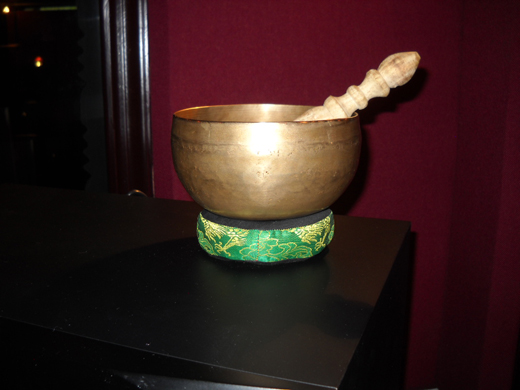
Ohm...The Nova Singing Bowl has the power to clear the air. (photo: David Weiss)
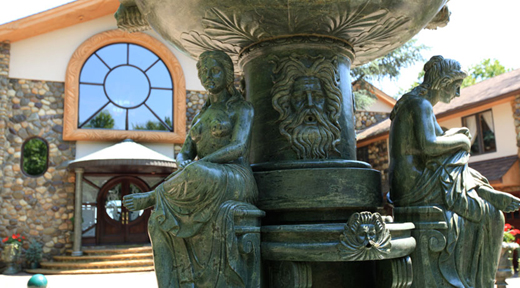
Follow the siren song -- straight to SI.
Visit Nova Studios on the web, or email them at info@novaent.net
DUMBO, BROOKLYN: Have you heard the tale of Two Tims?
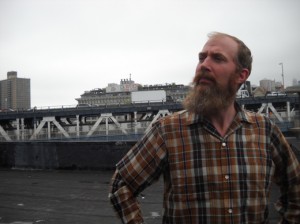
DUMBO -- and the world beyond -- is Tim Lee's oyster.
One Tim is a studio addict, whose creative biorythms are pulsating 24/7. The other Tim is a multitasking businessman, whose musical passions made him an unplanned parent of a busy record label, publisher, synch licensing agency, management firm, and production music house.
It’s a pressure-packed plethora of responsibilities, which conspire to keep him out of that beloved studio for long stretches.
The Tim of which we speak here is Tim (Love) Lee, the co-founder of Brooklyn’s Tummy Touch Music Group, a multinational indie concern that sprung up around his considerable skills in experimental synthesis and dub remixing. But the fact is that many of us are Two Tims as well – far more diversified in our revenue streams than we ever expected, to the point that time for musical creation must be fiercely protected.
“We’re doing a little bit of everything,” says Lee, a U.K. native whose English accent is a calming complement to the gear-and-vinyl packed studio he occupies. “Which is kind of what you have to do right now, because the income streams are way down. Between everything we do we get by, because the different areas all support each other — we would find it very difficult if we only did one thing.”
Originally launched in 1994, Tummy Touch Records is at the core of all that came to be the Tummy Touch Music Group, which currently employs eight people between its New York City and London offices. At first the label was simply a vehicle to release records by Lee, who started playing Hammond organ for the ‘80s hitmakers Katrina & The Waves, then made his mark as a DJ and tastemaker in the early UK Acid House scene.
Today, the Tummy Touch Records roster is populated with some highly respected indie artists who appreciate where Lee is coming from, including Groove Armada, Skylab, Tara Busch, and The Phenomenal Handclap Band (who’s 2012 release Form & Control is a must-listen). For those groups, and the dozens of other artists whose commerce touches Tummy Touch in some way, the diversity of this NYC/London-based company is a necessity for the way music businesses must work in 2012.
As with many music companies that have bridged the pre-Internet age with the present, the Tummy Touch label was launched with an uncomplicated aim. “We started doing all of this because we love music, and we wanted people to hear it,” says Lee. “It’s difficult these days to make money with a label — we put in a lot of man hours, and many of our businesses have a better income ratio. But we can’t help ourselves really – once it’s in your blood to be looking out for new music, meeting new bands, and wanting to support them, it’s difficult to stop doing that.”
To minimize the financial overhead that comes with fully supporting a new record, Lee and his partners have settled into a two-year cycle where they have one year of multiple record releases, followed by a year of less release activity. “The years we release less, the label makes more money,” Lee notes. “That’s because releasing a record is expensive: putting the band on the road, paying for PR, and producing merchandise has significant costs.
“We’ll be busy this year, but quieter next year on the release front. But we’re always signing new bands to the publishing company — we’re always making deals, even if we’re not making as many records.”
A look at the Tummy Touch Records roster, along with the Touch Tones publishing arm whose roster includes songs performed by Josh Ritter, We Are Augustines, Grace Jones and Killing Joke doesn’t immediately reveal a common thread – and there’s a reason for that. “It’s overused, but the word ‘eclectic’ is best for describing what we do,” explains Lee. “We cast the net wide as far as the influences go.
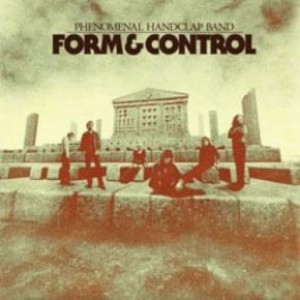
Form & Control -- the 2012 release from Phenomenal Handclap Band -- came out on the Tummy Touch Records label.
“When you add the publishing company into the picture, we can cast that net even wider than we do with the label, because we’re not putting the Tummy Touch label name on it. We’ve published Killing Joke and UK hip hop acts like Foreign Beggars, for example – we would never put out records like that, but we can sign it to Touch Tones, simply because we like it.”
Synch Licensing: The Ups and Downs
Tummy Touch learned the importance of appealing to music supervisors early on, an instinct which has allowed them to get synch licenses in films and TV for The Coen Brothers’ movie Burn After Reading, “Sex & The City,” “The OC,” “Nip/Tuck,” “The Mighty Boosh,” Mr. Bean, The Fast & The Furious, as well as for top brands including VW, Cadillac, Hewlett Packard, Amex, Gordon’s Gin, Baileys and more.
But synch licensing, which once brought in very good revenue for the relative few who spoke the language of music supervisors, has become significantly more competitive. “Unfortunately, the licensing income has dropped, which is a reflection of the overall economy,” Lee says frankly. “There’s a lot more competition. If you don’t want to do a deal on a track for $5000, plenty of other people will that day. It’s been a race to the bottoms with the fees — although it’s leveled out, insomuch as there’s a level below which you go, you won’t get good music. It’s not quite as lucrative as it used to be, but there’s always something to be had in the licensing realm.”
According to Lee, it’s the licensing sector where the biggest benefits of being an international company – spanning multiple time zones – reveal themselves. “In these days of instant gratification, we can get back to people almost around the clock,” points out Lee. “My partner in the UK Matt Smith gets up really early and I stay up late, and additionally, if there’s a holiday in the UK, it’s usually not a day off in the US, or vice versa. So we’re literally available 24/7. When it comes to licensing music, music supervisors are working all the time and they want an answer, so that’s a real advantage.”
How Digital Streaming is Affecting the Bottom Line
As an indie label founded in ye olde days of physical media, Tummy Touch’s particular experience provides an informative window on the impact of digital streaming platforms. “Digital continues to grow for us,” says Lee. “There are a lot more income streams now. It used to be that record labels just sold records, CDs or cassettes. You pressed up the records, got them do the distributor, then got one check back from them each month.
“Now there’s downloads, digital rights, streaming, and licensing, and we’ll get 50 smaller checks in a month. So there’s growth in the number of income streams. The amount of money you earn from each of them goes down, but the breadth gets wider. At the end of the day, there’s been a general increase in the places that Tummy Touch can find income.”
Like a lot of rights holders, Tummy Touch is watching Spotify closely to see how it will impact their bottom line, if at all. “We have seen the income going up,” Lee says. “It’s not much money right now, but it is increasing rapidly: The first month it was something like $2, and then it went to $20. So if it keeps doing that, I’m quite happy.
“As well, Spotify is a great way for people to discover music. They’ll find out about things on Spotify, and they’ll go and buy it. As a discovery tool, it’s one of the missing puzzle pieces in the digital landscape.”
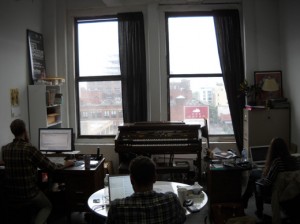
Steady as she goes...On the bridge at Tummy Touch HQ.
Enabling Artists at All Costs
For Tim Lee, the opportunities that today’s music industry provides to diversify can be a blessing…and occasionally a curse. “As a musician, all I really want to do is lock myself in this studio and get crazy sounds from all this stuff!” laughs Lee. “But I do get a lot of satisfaction from the business side of what we do.
“When we’re working with an artist, we can literally see into every part of their career. We’re lucky in that we’ve done most of the things in the music industry: been a musician, been a record label, run a publishing company, run a licensing agency, overseen distribution, been club promoters, been managers. We’re able to answer most questions that artists have for us, because we’ve got it all covered.
“It’s a lot to handle, but any business is. No artist needs a record label, but an artist does need music industry professionals, or a team of them, to allow them to do what they need to do. We believe in making sure the artists are getting paid the way they should be paid, so people can earn from their creative endeavors. And there are so many ways to do that, because every part of your musical life can be monetized.”
The key function of indie entities like Tummy Touch is to take all the tools that exist, and assemble them in a way that empowers artists. “If we can do our job properly, and somebody that’s truly talented can make a living doing what they love,” Tim Lee concludes, “then that’s another one for the wall.”
***
TUMMY TOUCH STUDIO TOUR
When Tim Lee puts on his artist hat, the results can be hypnotic. His classic 1997 album Confessions of a Selector was rightly described by Roy Spencer of FutureMusic as a deft collection of “kooky vocal samples, up-temo beats and exotic loops.”
Today, Lee remains a master of live dub, remixing, and synth experimentation, as evidenced by his recent release, Tim Love Lee: Fully Bearded – 15 Years of Tummy Touch Records in Dub. The more alienating Against Nature, a set of electronic tonescapes commissioned by the Brooklyn Experimental Movement Ensemble, recorded in 2005, is another highlight.
All of it comes together in Lee’s DUMBO studio, which is a banquet for the ears and eyes. Here are some highlights from his sanctum.
WBS CONSOLE:
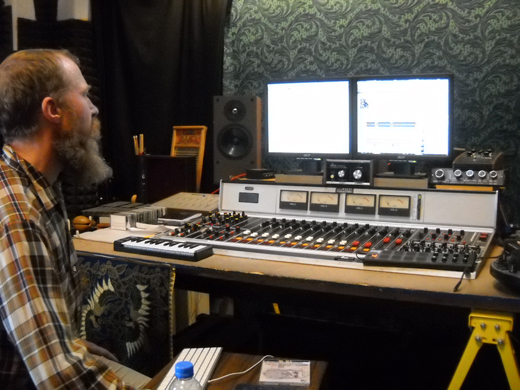
Indestructible: Tim Lee helming his WBS broadcast console.
“This is a Ward Beck Systems console, also known as ‘The Canadian Neve.’ A college radio station in Connecticut was selling it for $500 on Craig’s List, so I bought that, along with another from a radio station in Las Vegas. It’s a bit of a Frankenstein – it only had one aux send, so I added another four. It sounds pretty old and crunchy, but solid. It sounds bomb-proof, like you can turn it up and up and up, and it’s never going to crap out.”
LAFONT TELEPHONE SIMULATOR:
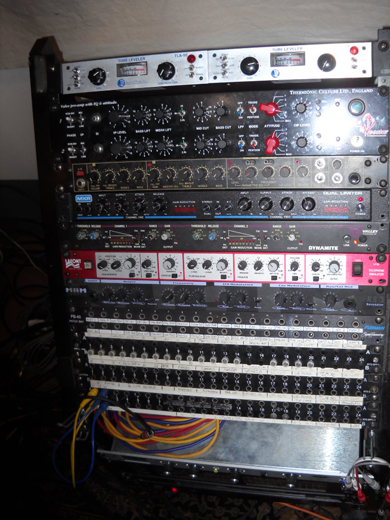
The LaFont Telephone Simulator (red rack unit) is surrounded by classics old and new.
“It’s exactly what is says it is: it’s designed for movie post production, to make someone sound like they’re talking through a phone or a loudspeaker. It’s a good, bizarre feature. I love buying high-end gear for low prices. This cost $2,000 when it came out, but now it costs $200. Because who the fuck needs a phone simulator when you’ve got plugins?”
DELTA LABS PROFESSIONAL SERIES EFFECTS:
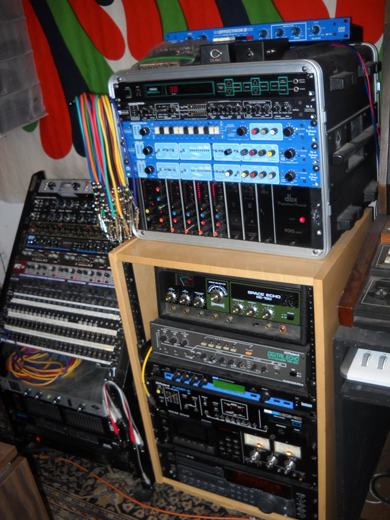
Lee's Delta Labs collection starts with the black unit 2nd from the top, in the top half of the rack.
“The (black) DL2 Acousticomputer is a reverb, followed by a harmonizer and then two delays (the three blue units.). I couldn’t even begin to describe the stuff this Acousticomputer does: It’s a beat mangler, like a granular synthesis engine, with simple, really early digital technology – but badly done!”
ROLAND DIGITAL ECHO:
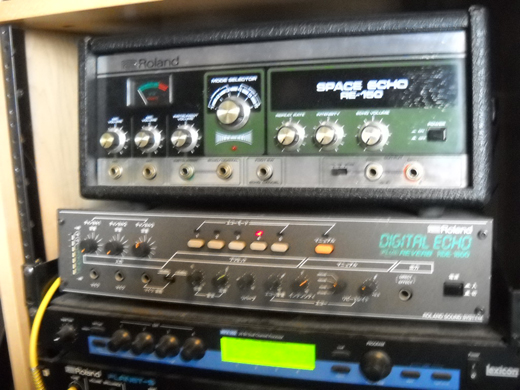
A warmer, fuzzier look at the Roland Digital Echo -- all markings are in Korean.
“It’s all in Korean, and was designed for karaoke. The thing I like about it is that has presets on the display, and you can jam between those buttons`and play the presets. It makes really unique stuff.”
MACBETH M5 SYNTH:

"Like climbing a mountain" -- the MacBeth M5 synth.
“It’s a mixture between an Arp 2600 and a Mini-Moog. The creator, Ken MacBeth, is absolutely nuts, and he has all these weird ideas about synth architecture. I like just turning it on and standing in front of it. It’s like climbing a mountain.”
KORG MS20:
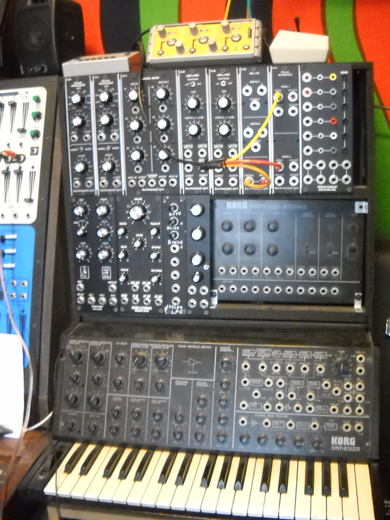
The synth that started it all: Lee's Korg MS20
“This is my first-ever synthesizer, and that’s been with me since I was 15. It’s a well-known synth, but it’s really amazing.”
PHILLIPS PHILLYCORDER
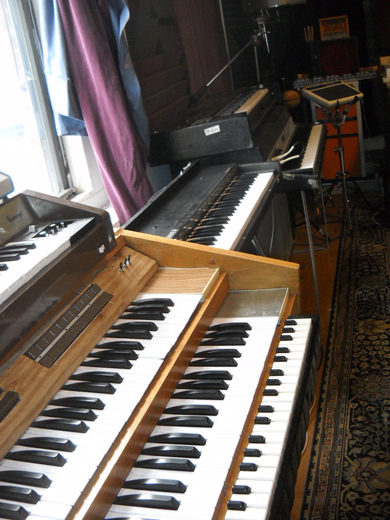
The Phillips Phillycorder (in foreground) is in good company.
“This is a combo organ, like a Farfisa, but they’re German, and not so common over here. A French guy I know shipped it over here, did some shows and an album, and then it broke. He said, ‘If you can mend it you can keep it!’ I did mend it, and made some modifications. It’s a really wonderful-sounding thing.”
REST OF THE BEST!
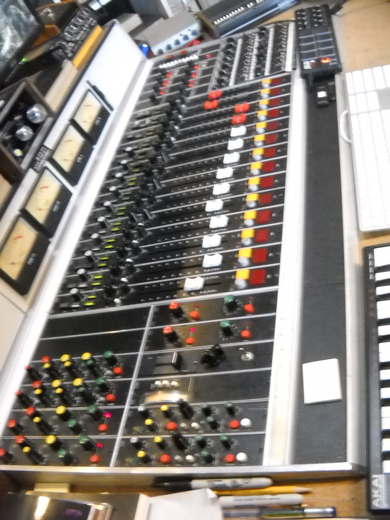
Another perspective on the WBS board.
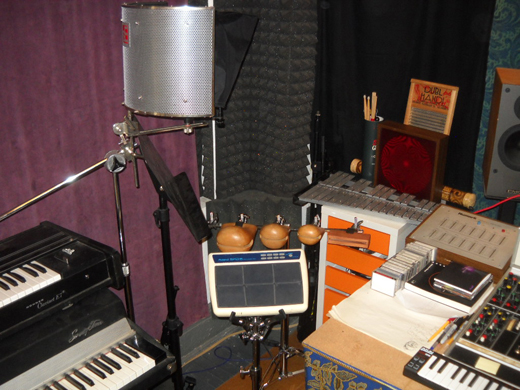
More musical tools ready to go.
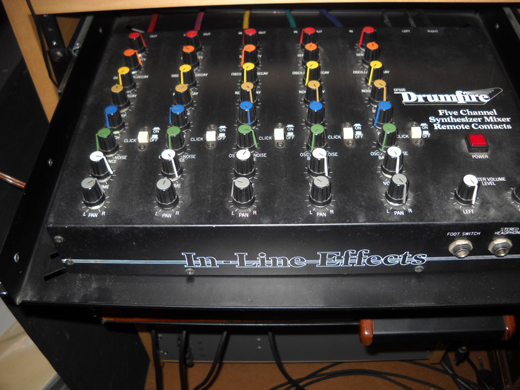
The Drumfire smolders in a pullout drawer under the Korgn MS20.
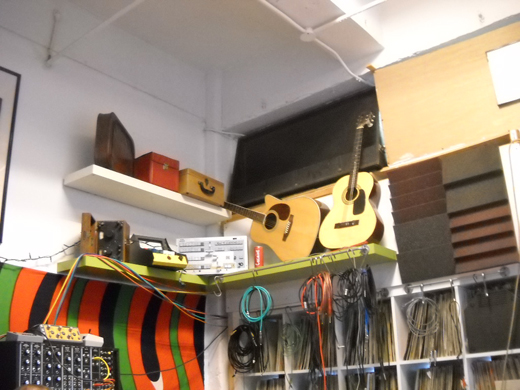
Guitars welcome.
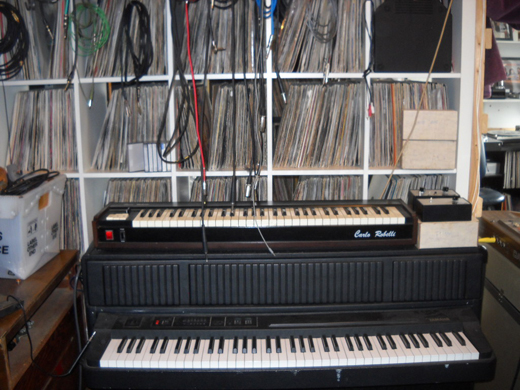
EPs and LP's cohabitate.
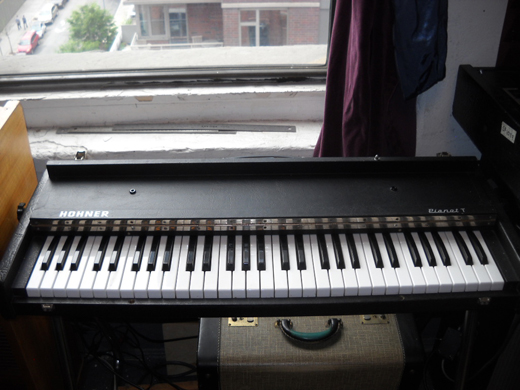
Hohner in natural light.
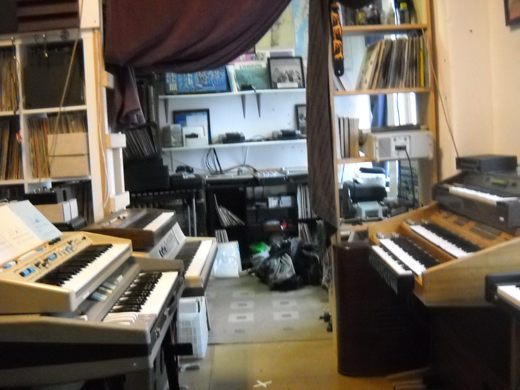
Looking across the studio from the console sweet spot.
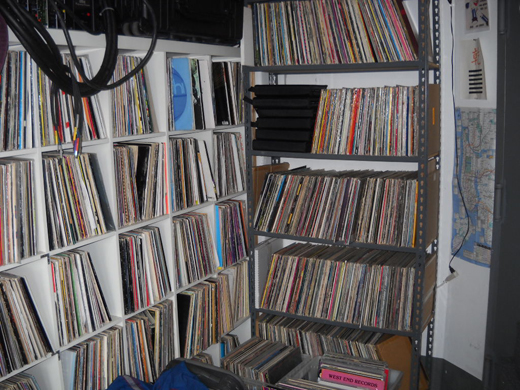
A reputation founded on records.
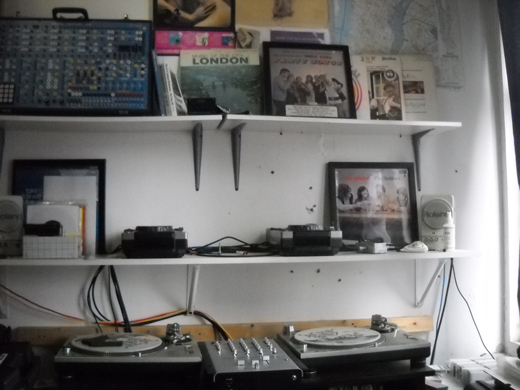
The DJ station.

Who do you think keeps all these analog synths in working condition?
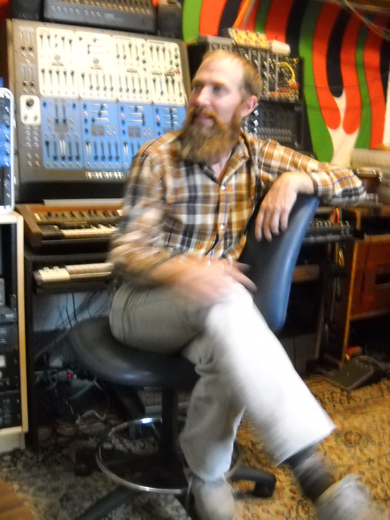
Tummy Touch mixes business with pleasure.
— David Weiss
SOHO, MANHATTAN: If it’s possible to be an under-the-radar street in New York City, the downtown string of blocks known as Crosby somehow accomplishes it. Tucked in between the famed buzz of Broadway and the stylish miles of Lafayette, Crosby’s cobblestones somehow escape notice by the masses.
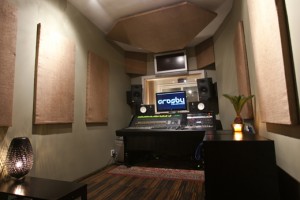
Crosby Collective Studios — it’s worth the search.
Hiding right out in the open is Crosby Collective Studios, a three-room facility whose artistic atmosphere has led it to a quick takeoff. Founded in 2010 by the trio of A. Bains, Michael Brian, and Billy Gastfield, Crosby Collective has a focus on vocals, but excels at a number of other functions as well.
If its high fidelity — and a low-key location amidst the fray — that you seek, then look no further.
Facility Name: Crosby Collective Studios/Productions
Website: http://www.crosbycollective.com, Facebook: http://www.facebook.com/CrosbyCollective
Location: SoHo, Manhattan
Neighborhood Advantages: Trendy, Fashion Forward Classically cool/Hip Neighborhood. Conveniently located in the worlds trendsetting epicenter. Features lots of street parking and close to the B,D,F,M,N,R,6,A,C,E trains.
Date of Birth: December 20, 2010
Facility Focus: Crosby Collective specializes in vocal recording and mixing. We also have a talented team of in-house producers and songwriters.
Mission Statement: The Crosby Collective Recording Studios are a full-service recording and mixing ateliers located in the heart of New York City’s SoHo district. We specialize in vocal recording, live recordings and mixing as well as production and songwriting. Our clients include some of the most prevalent acts in music today.
Clients/Credits: 2 Chains, Battleroy, Brandyn Burnette, Busta Rhymes, Chiddy Bang, Consequence, Currency, Emilio Rojas, Eve, Fred Da Godson, Gunplay, Jared Cotter, Jesse Boykins III, Mario Winans, Mistah F.A.B, Michael Malih, The Mystery Lights, Nadine Coyle, Neon Hitch, Ninjasonik, Olivia, Owl City, Reek Da Villan, Robopop, Shirazi, Serius Jones, Skyzoo, Teddy Geiger, Torch, Upper Class Men, Wynter Gordan, Young Breed and many more…
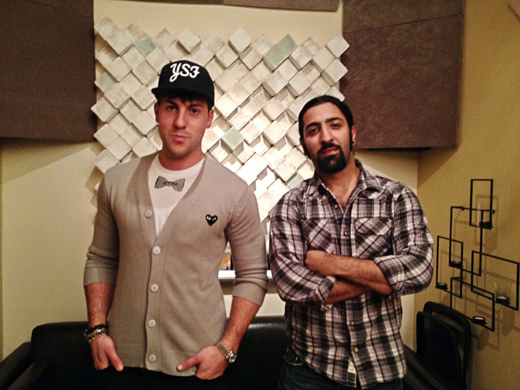
(l-r) Two of CRC’s co-founders, Michael Brian and A. Bains
Labels: Sony ATV, EMI, Columbia Records, Atlantic Records, Warner Bros. Records, Def Jam, Universal Music Group, BMG, MMG
Key Personnel: A. Bains (Founder/Owner/Chief Engineer), Michael Brian (Founder/Owner) , Billy Gastfield (Founder/Engineer), David Stanaj (Producer/Studio Designer), Lauren DeLia “Lola” (Songwriter/Engineer), Alex Oliverez (Engineer), Johnathan Rogers (Engineer), Robert Arbelo (Producer), Chris Montgomery (Engineer), Hybrid Infamous (Songwriter), Orlando Delacruz (Assistant Engineer), Amit Hingorani (Booking Consultant)
System Highlights: Neve 1272 x 8, 1961 Neumann U67, Blue Bottle Microphone, SSL Alpha Channel, UA 610. We recently acquired a Neve 5116 48 Channel Console that we will be installing over the next few weeks, it will be up and running for the summer of 2012.

Soon to be installed — the Neve 5516 48-channel board.
Distinguishing Characteristics: When we built our studios, we wanted to create an environment where everyone would feel comfortable and be at their creative best. To cater to clients from all aspects of society and different genres of music, we themed each of our rooms based on different moods.
Our A room has a calming feel to it with subtle tones centered around a Bonsai tree, we have branded it the “Zen Room”.
Studio B is flashy with bright colors and we call it the “Retro Room”
Our clients love Studio C, it has a certain warmth to it that just inspires creativity, it goes by the “Hawaii room”
The building is on fire, you only have time to grab ONE thing to save, what is it? All I need are my files!! And maybe a microphone — I’ll go with the storage server in one hand, the 1961 Neumann U 67 in the other.
Rave Reviews: One of the most common reviews our clients give us is that they love the warm and inviting vibe our spaces offer. Our amazing staff is always on hand, ready to make sure all of the clients needs are being met, swiftly and with a smile. Our exceptional and professionally-trained team of engineers insures that each client will get the best possible sound and mix on each record.
Most Memorable Session Ever: We’ve gotten to work with some amazing people over the past few years and have made great music and memories that will last a lifetime. I can’t possible narrow it down to one session.
Session You’d Like to Forget: While most people don’t like to bad-mouth their past clients, this one is easy for me: DJ Lolli Lux with Nino Caccavale producing has to have been the most painful sessions I have ever endured. She couldn’t hold a note and no amount of Melodyne or Autotune could salvage it.
Dream Session: How do you answer a question like this without sounding corny? I know Mike would say The Beatles or Frankie Lymon. For me it would be recording Jimi Hendrix playing guitar or Jay-Z rapping. Another dream would be to mix a record with Dave Pensado and Jacyen Joshoua.
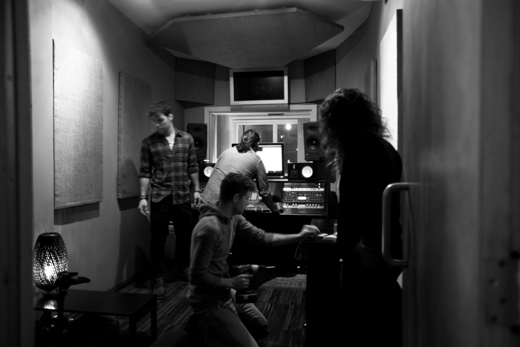
It’s a beehive inside.
— A. Bains (Founder/Owner/Chief Engineer), Crosby Collective Studios





































































































































